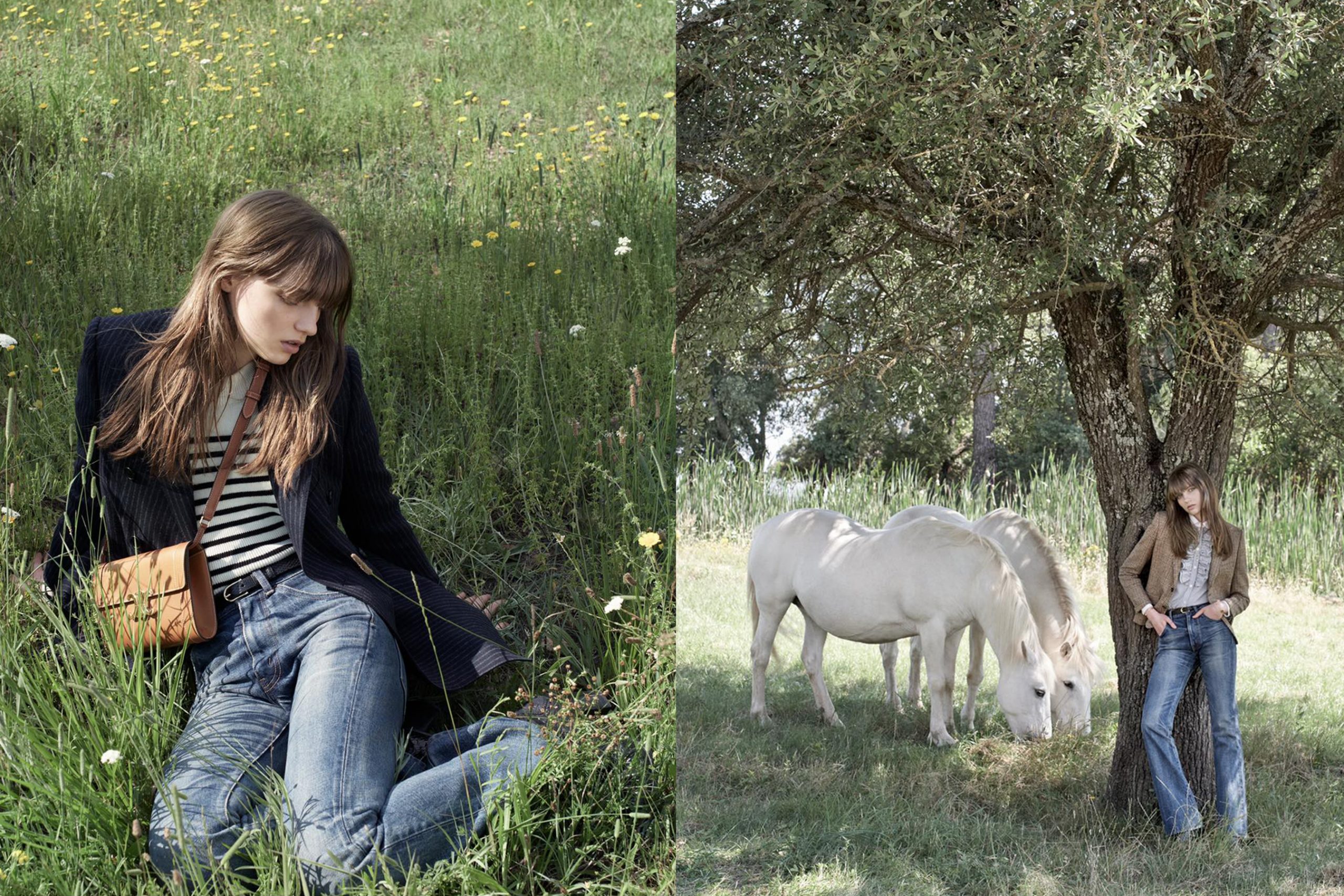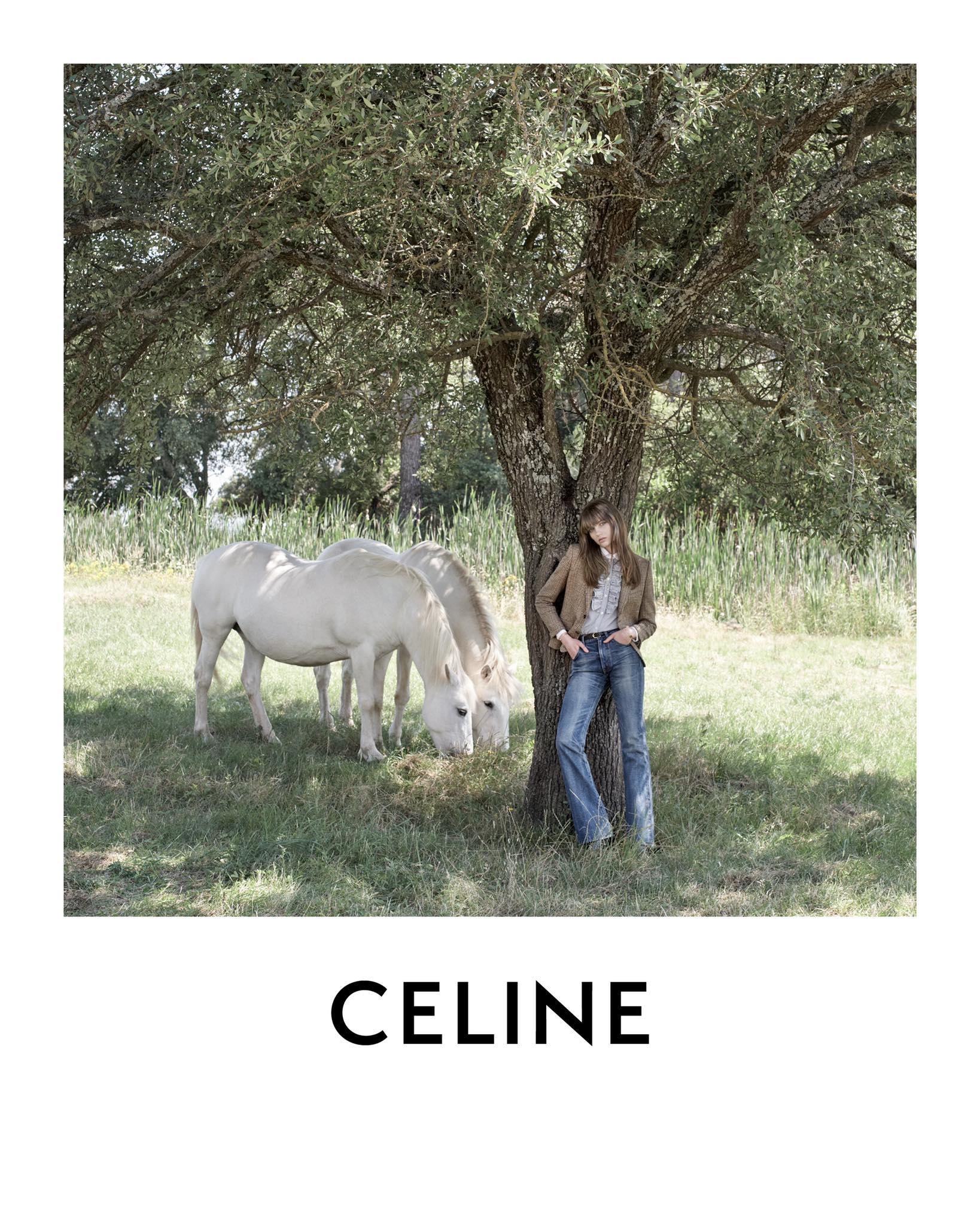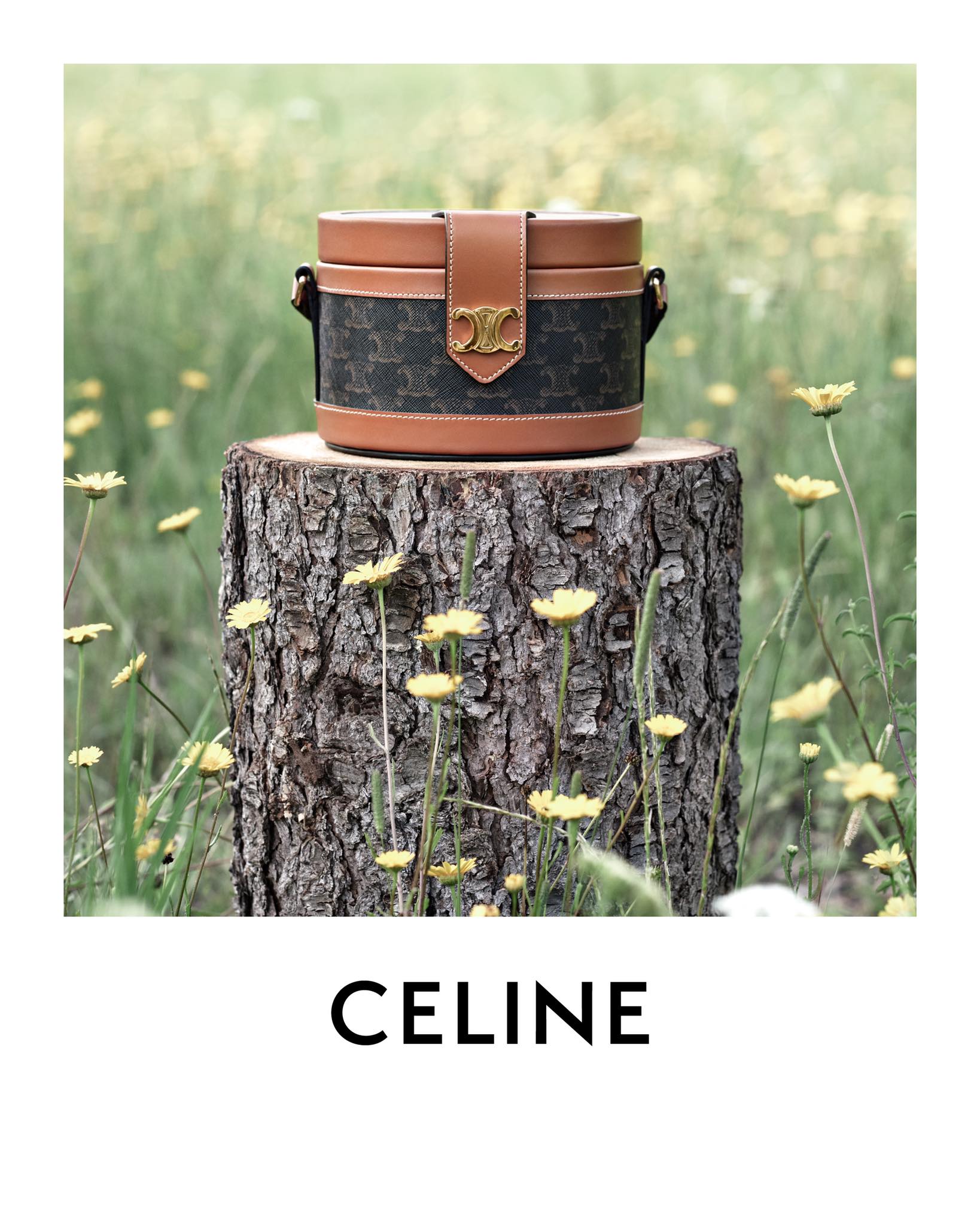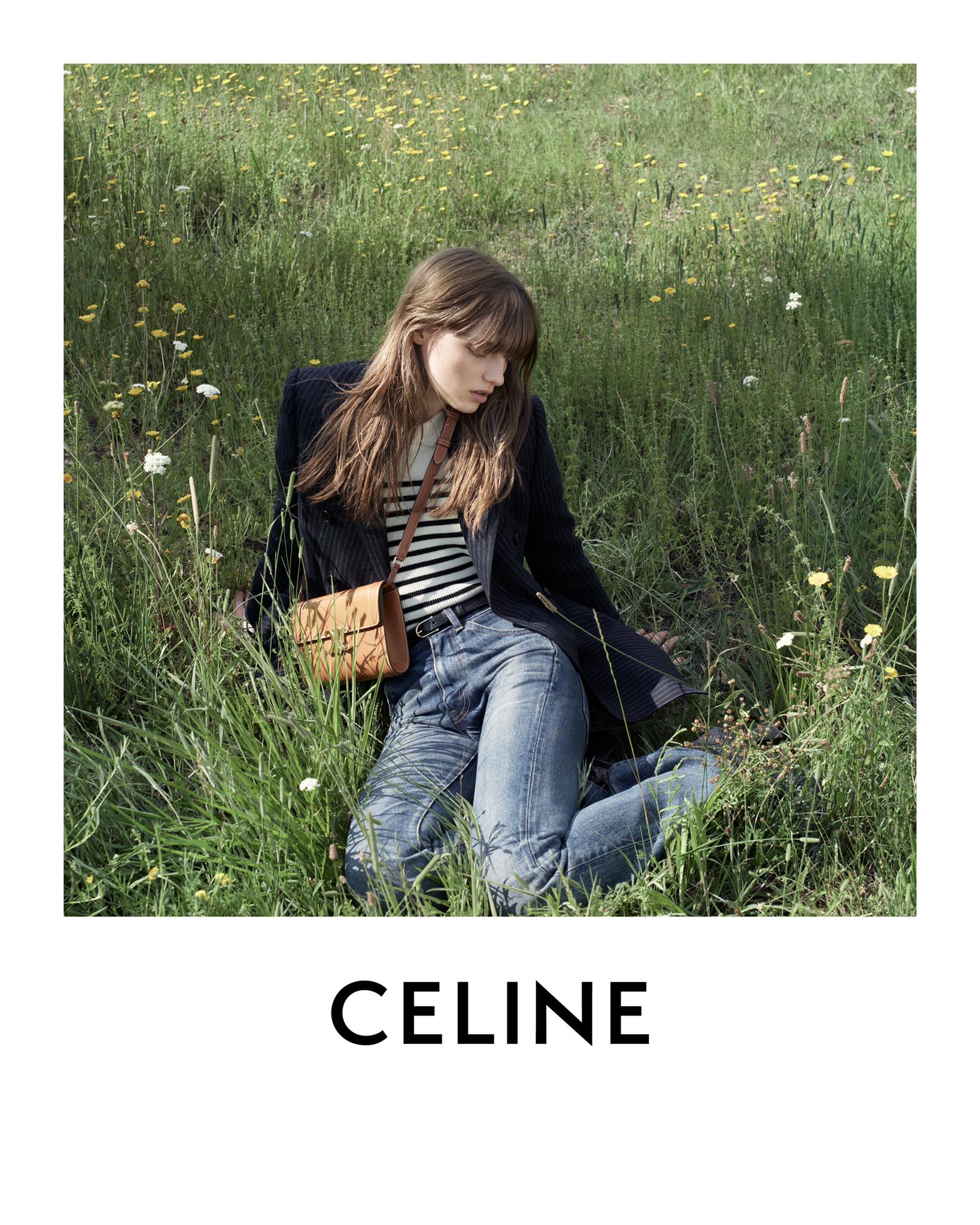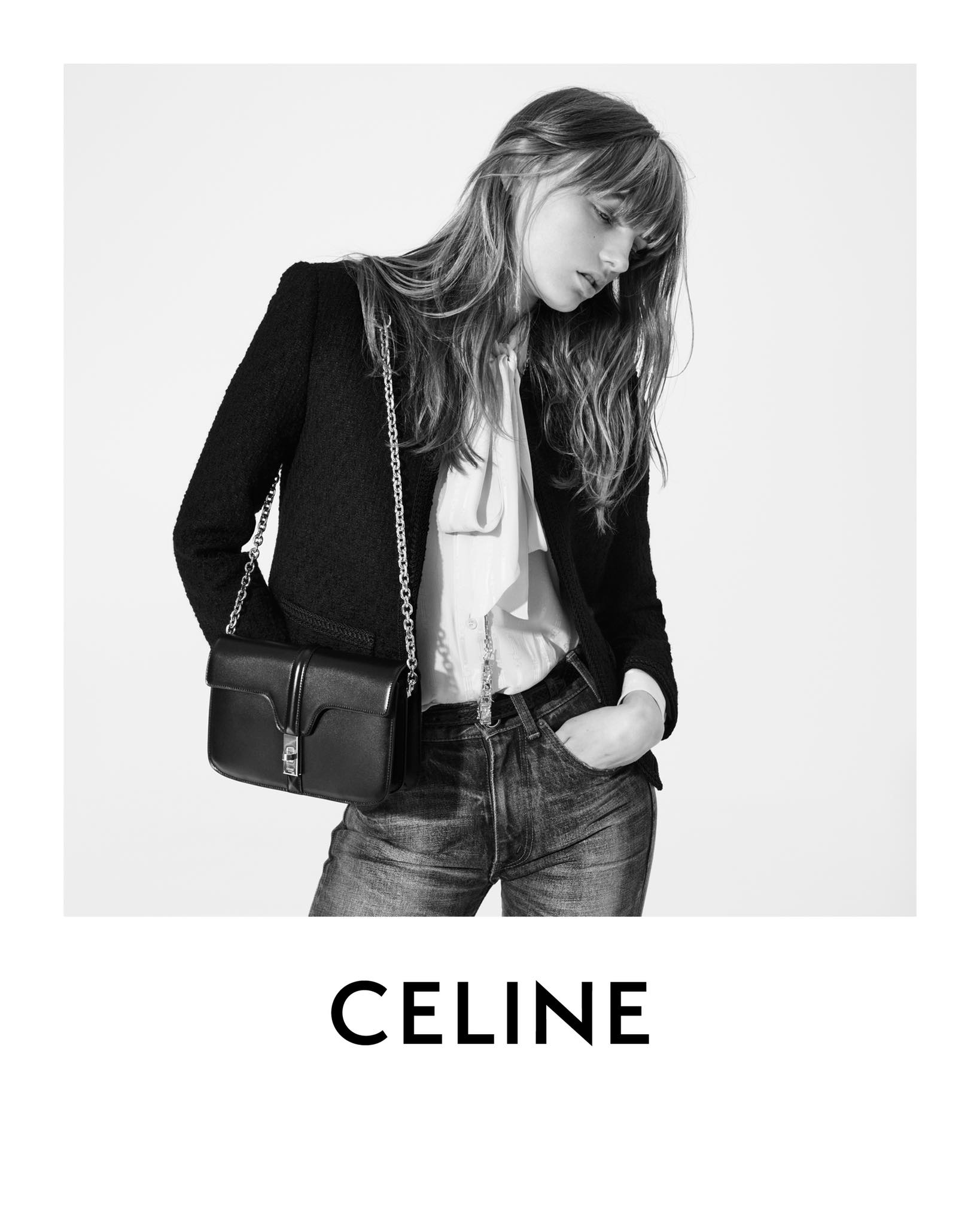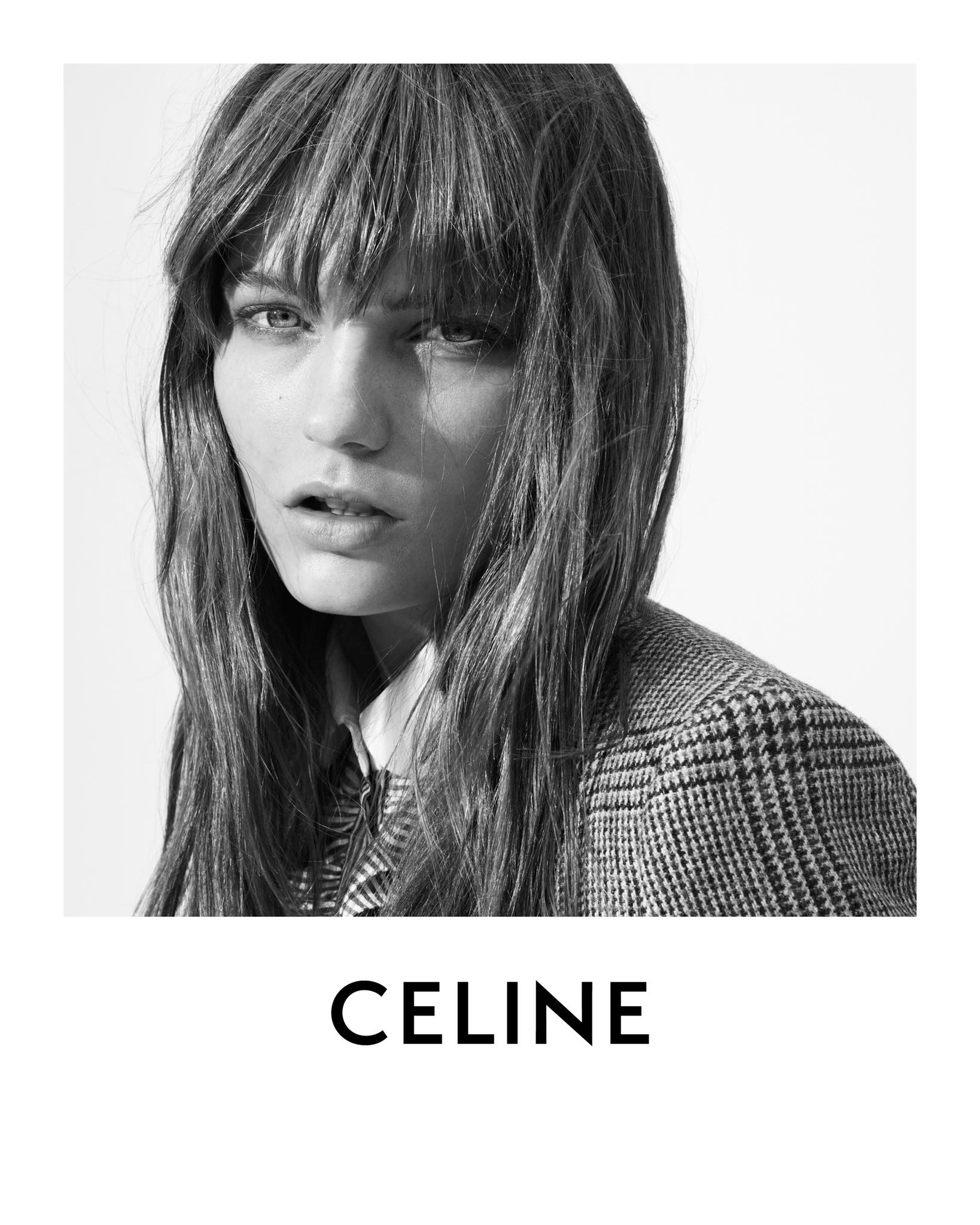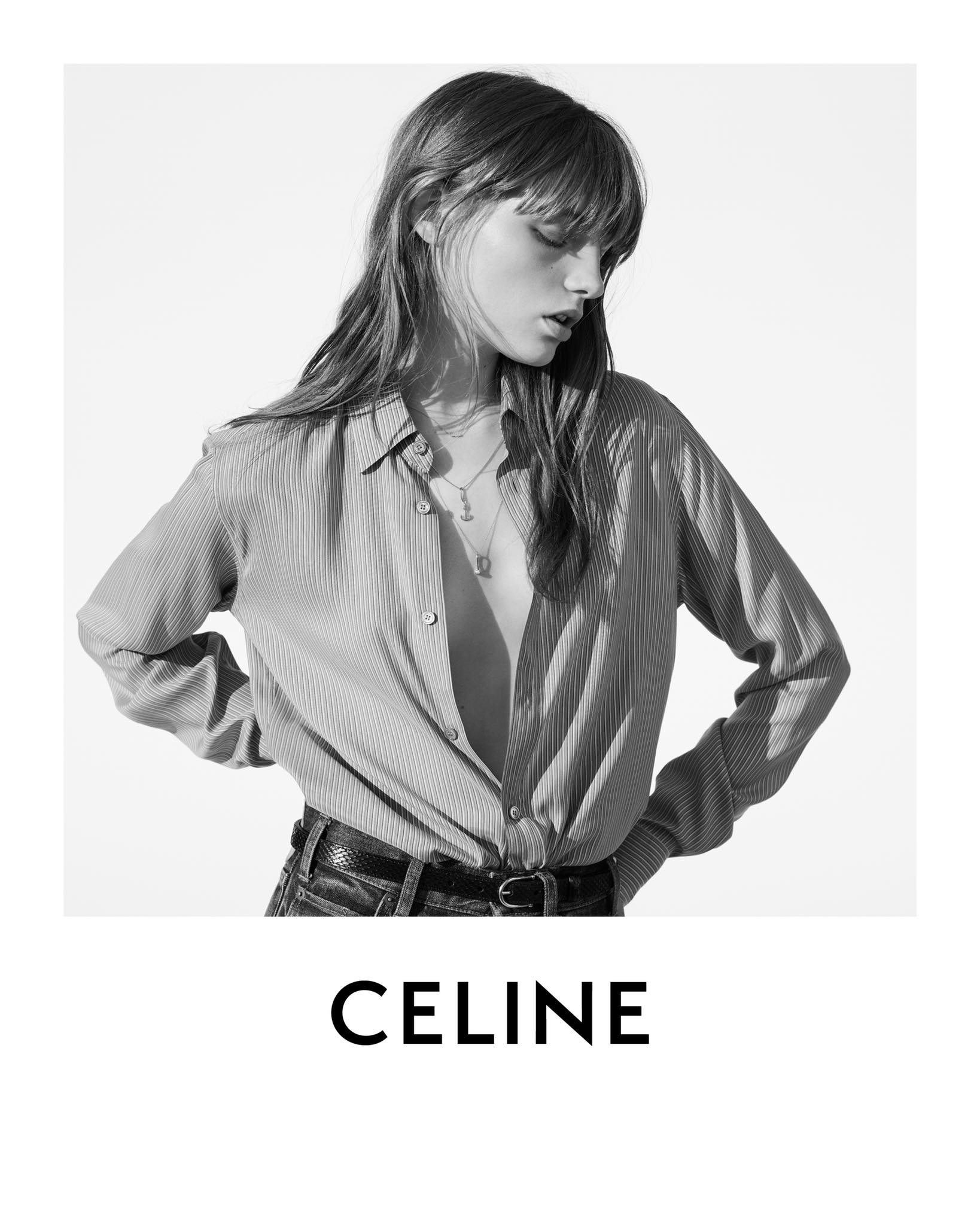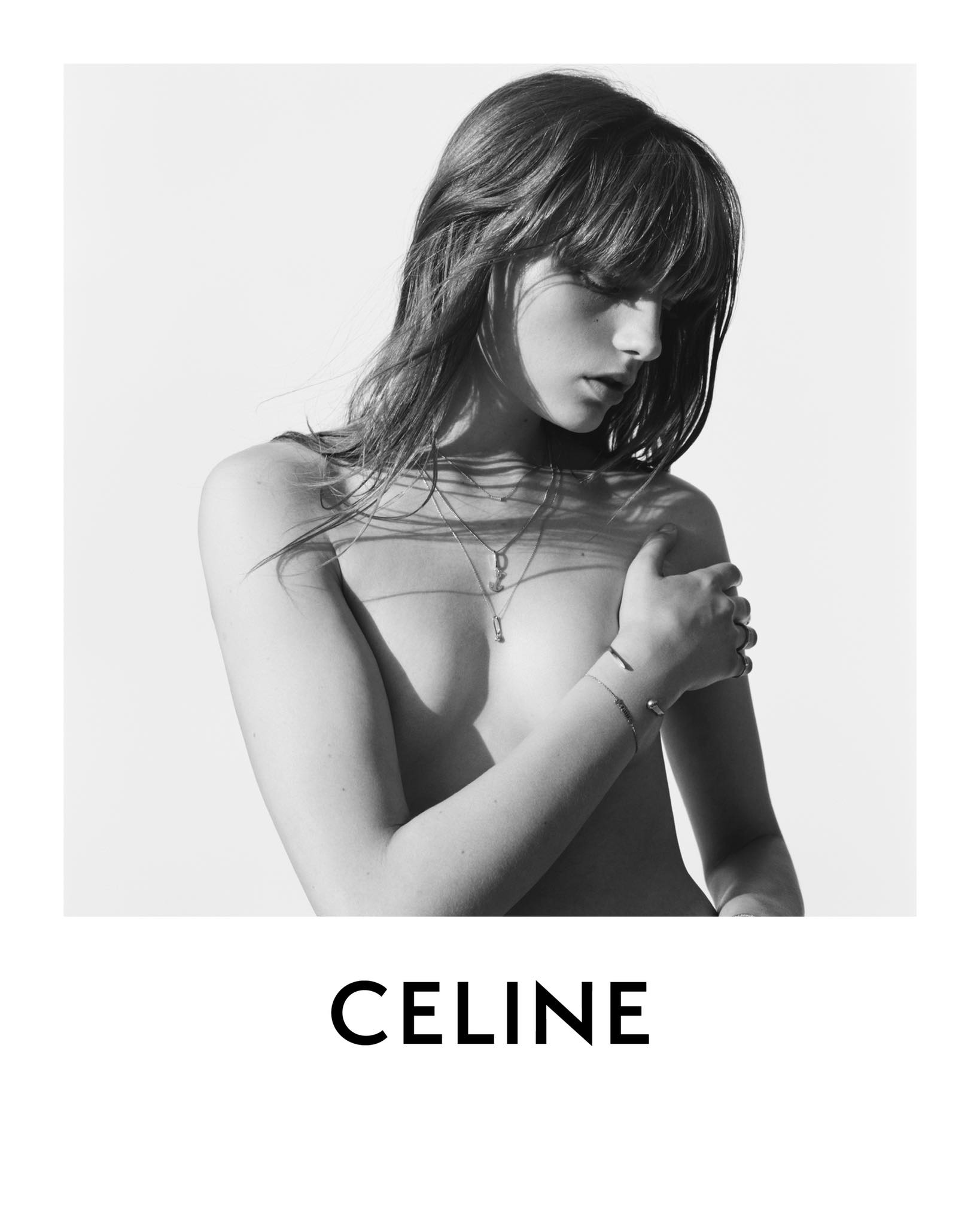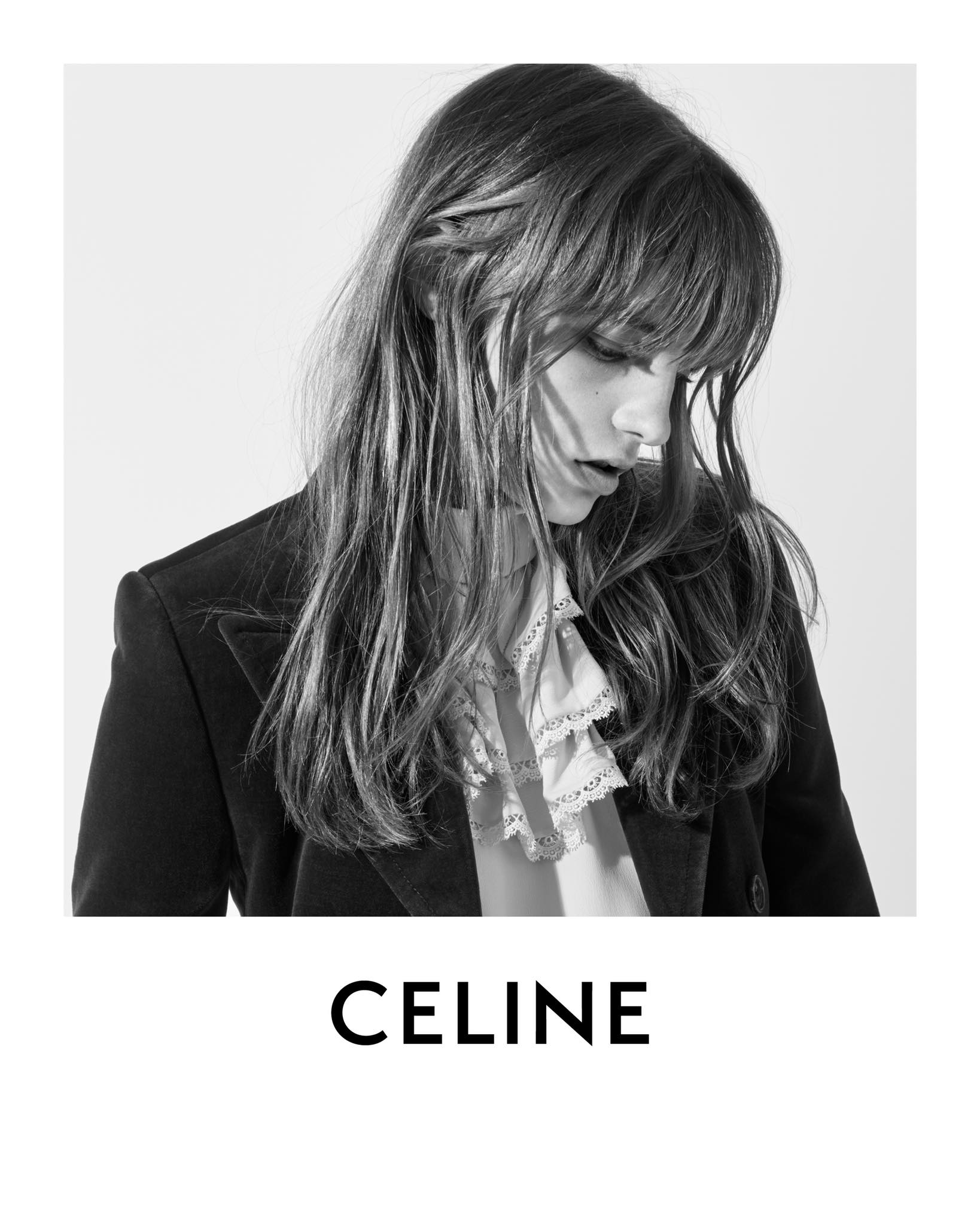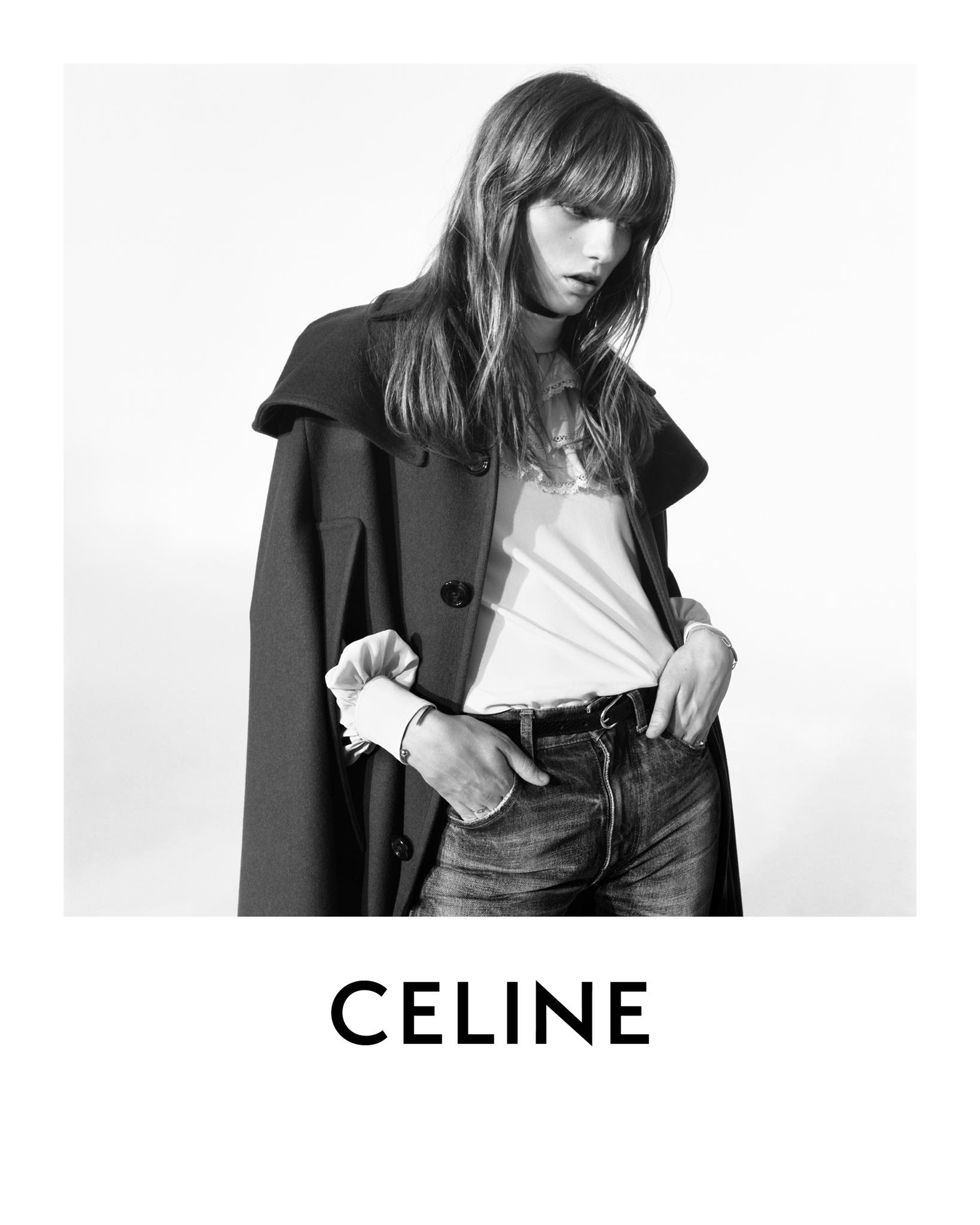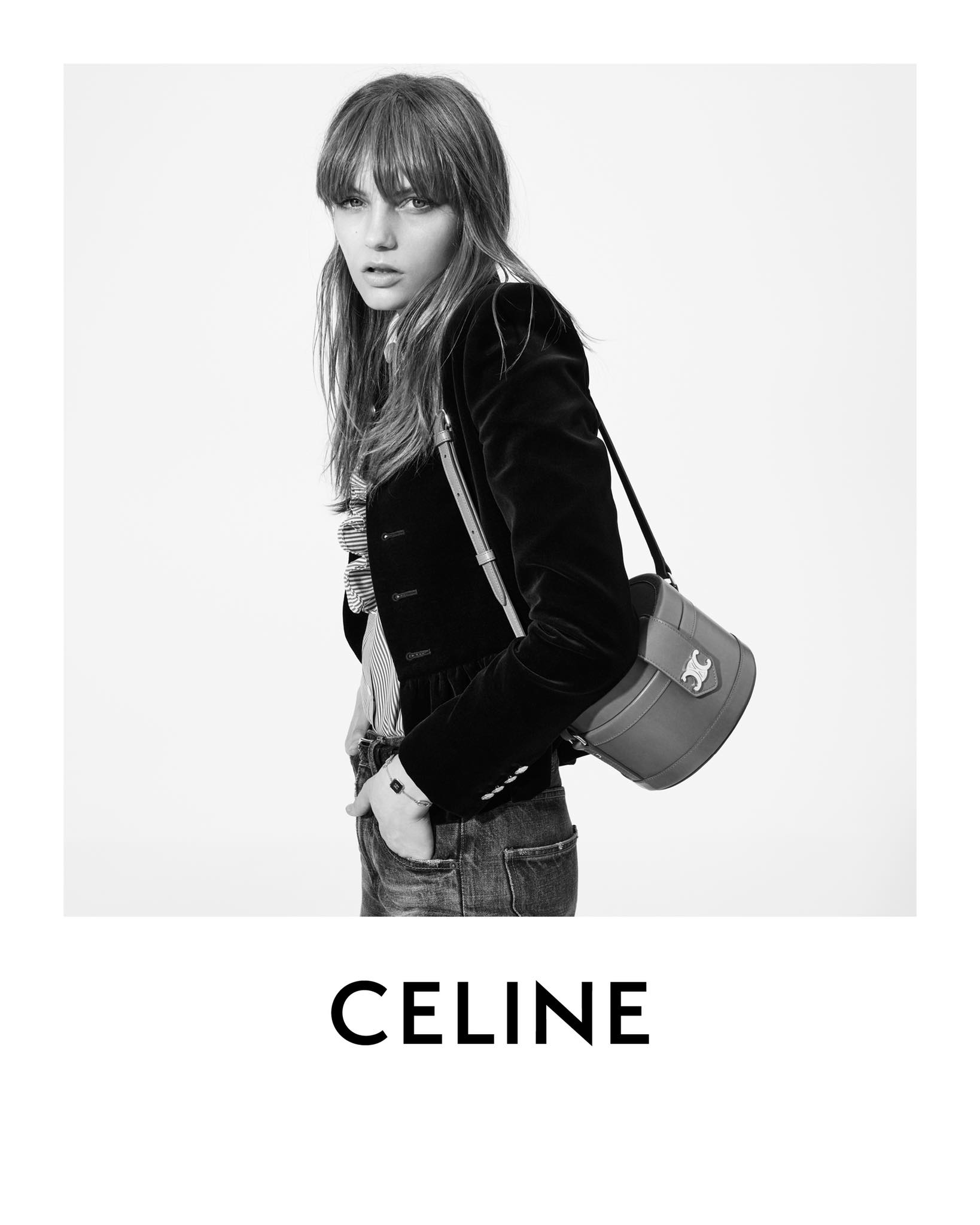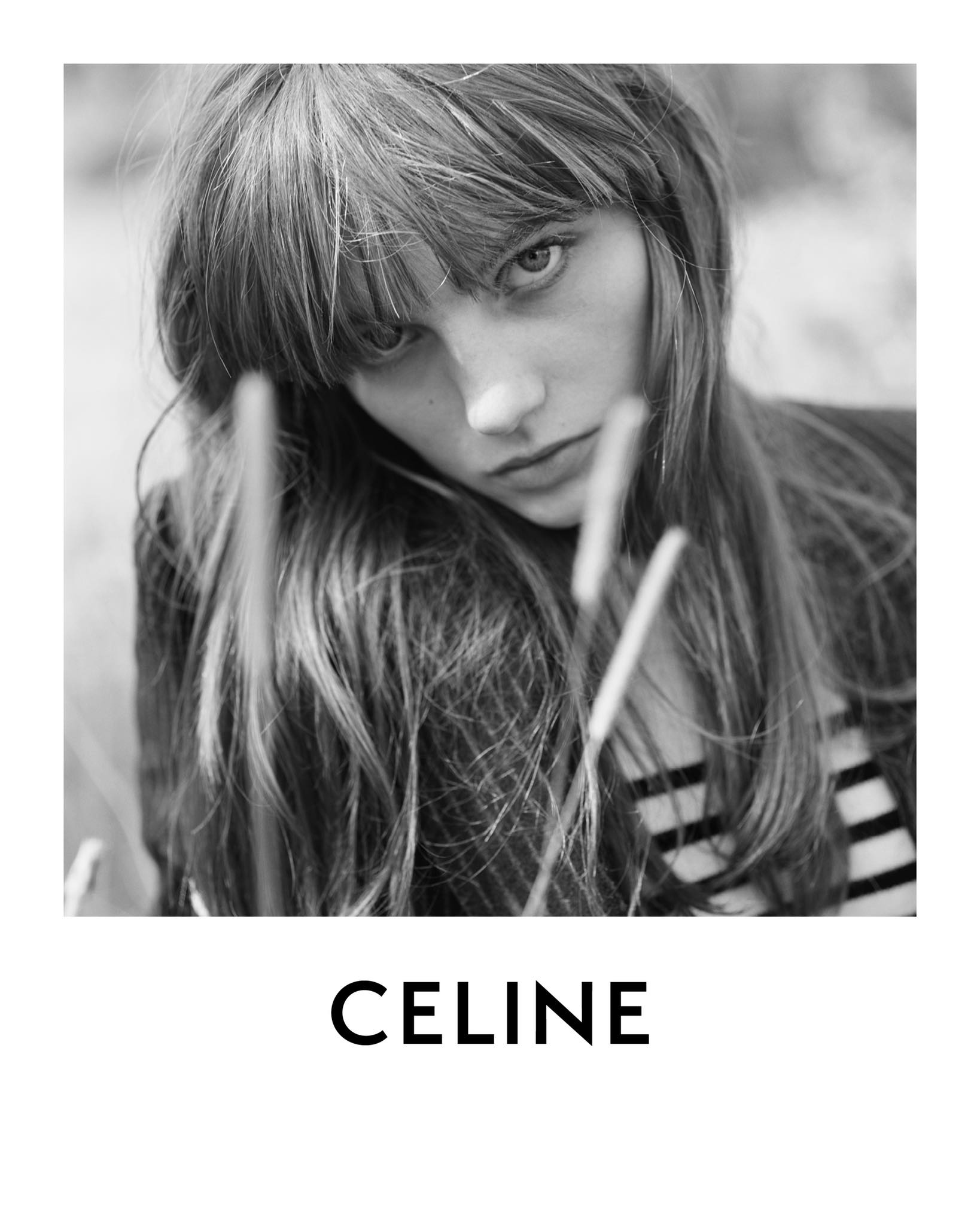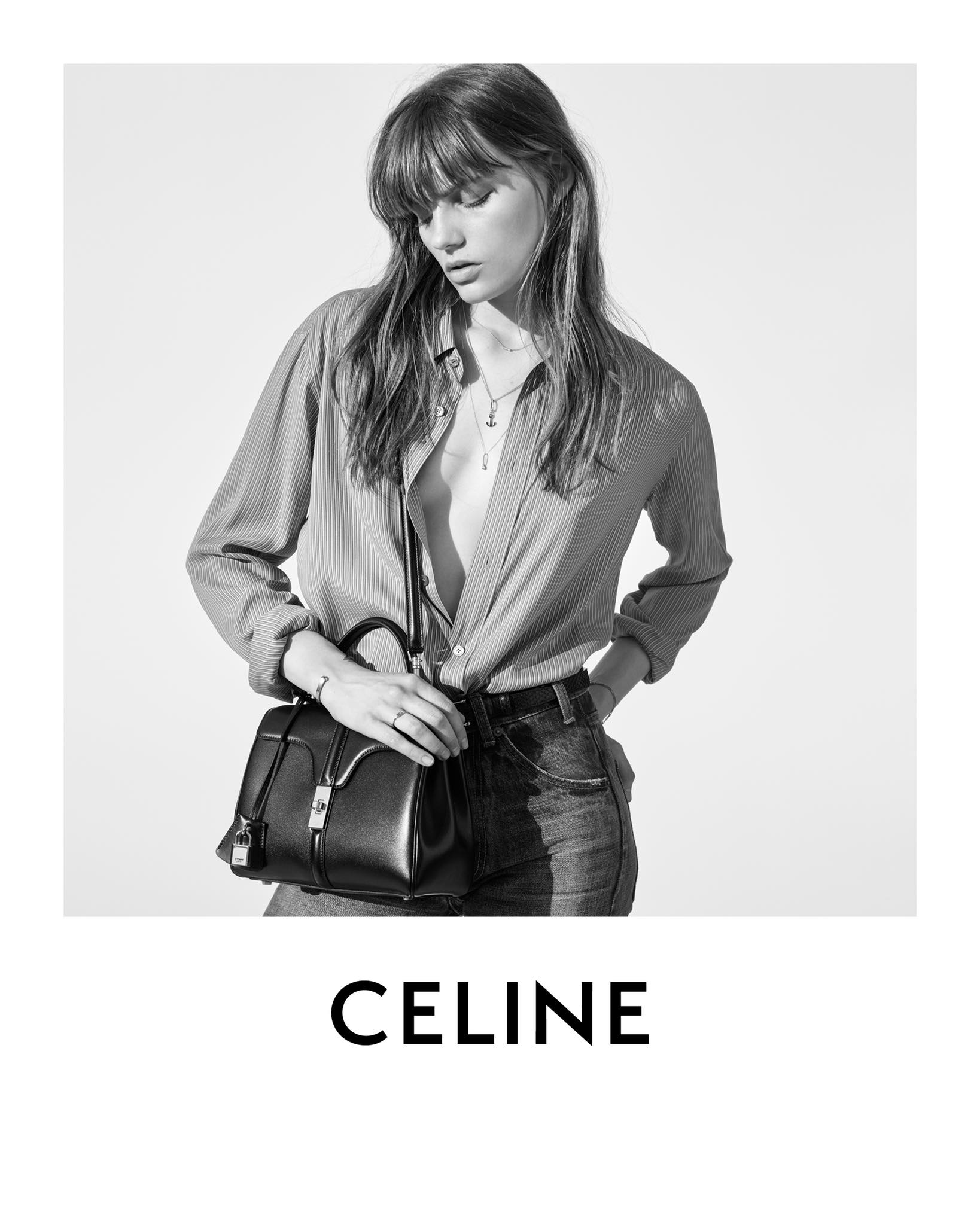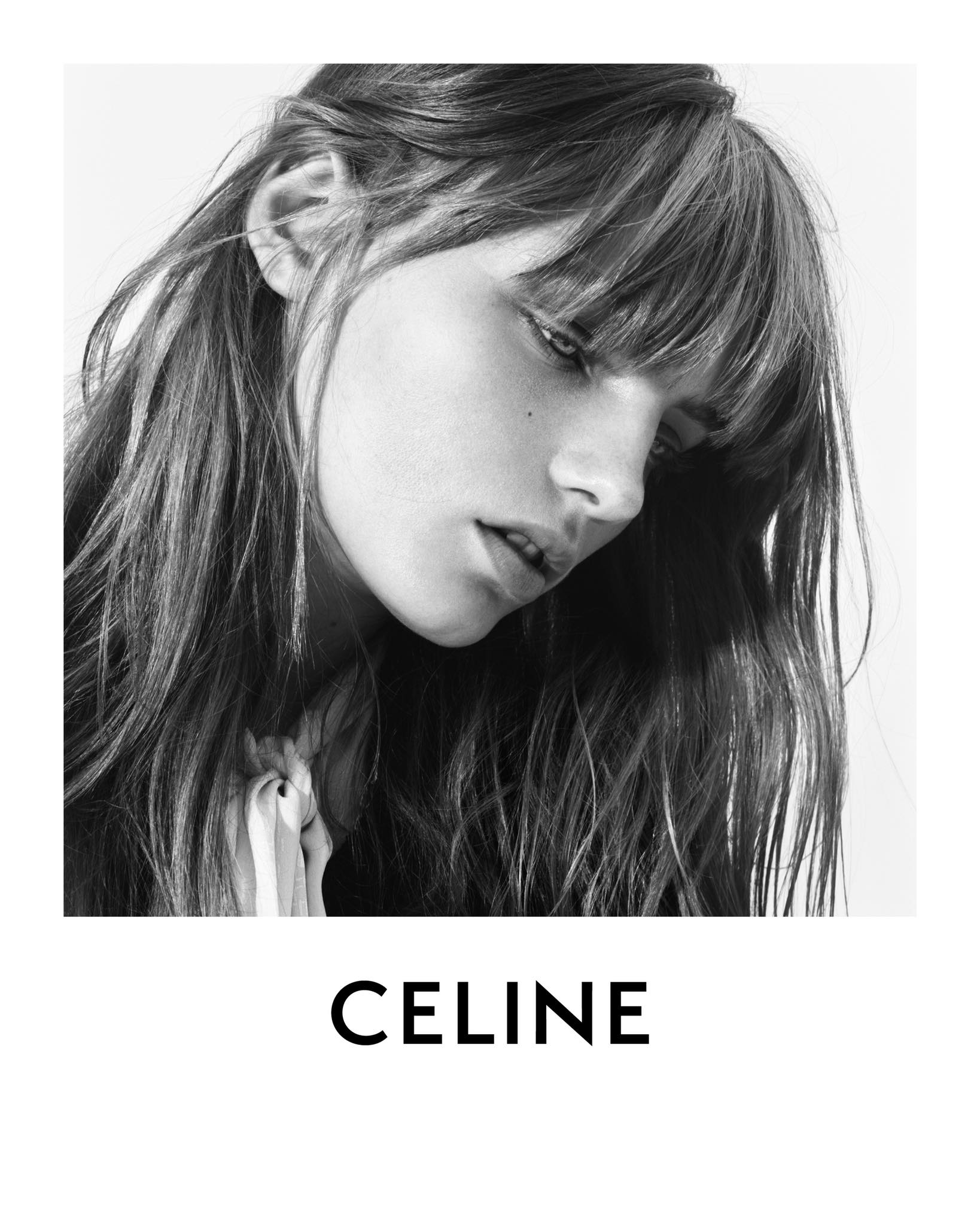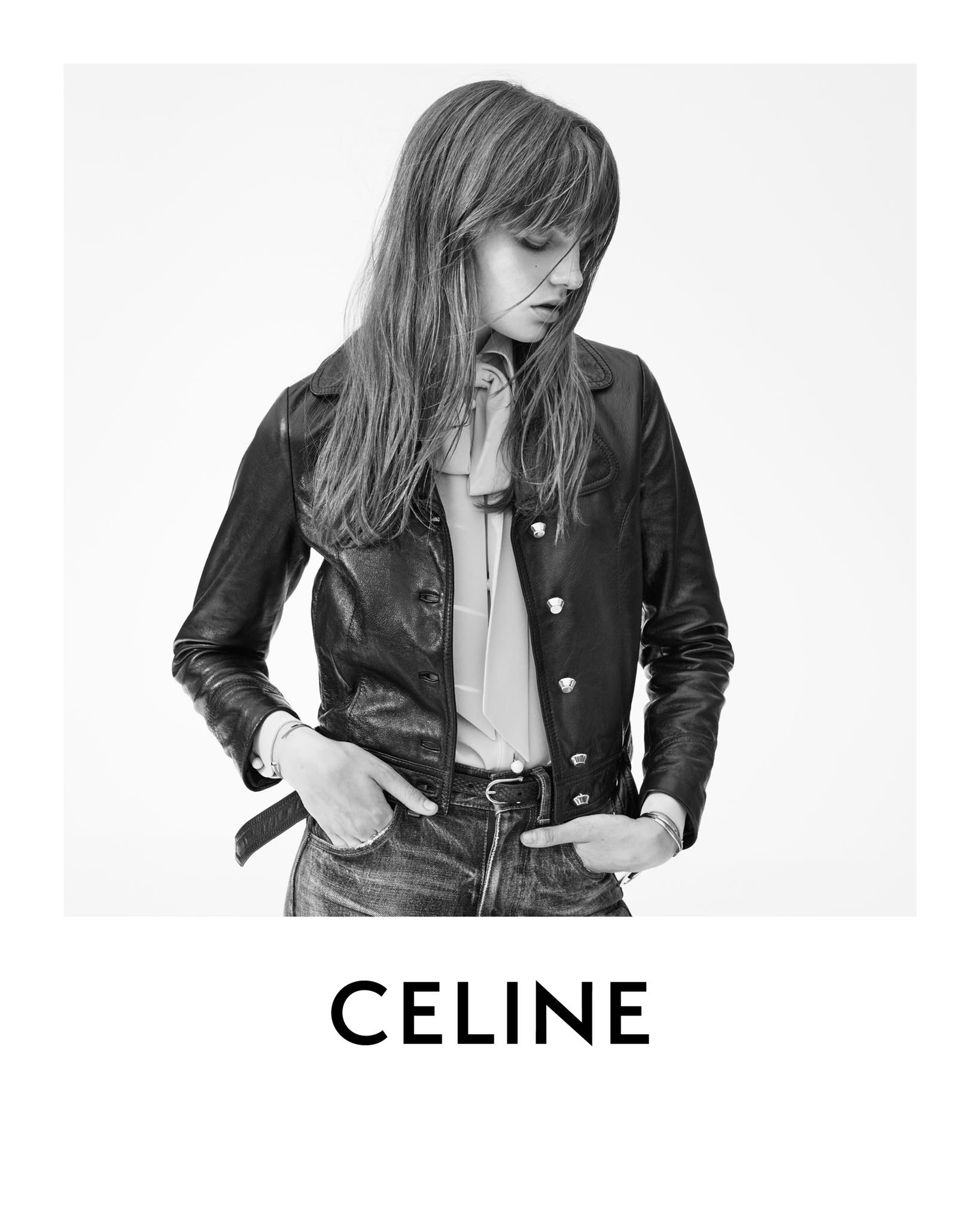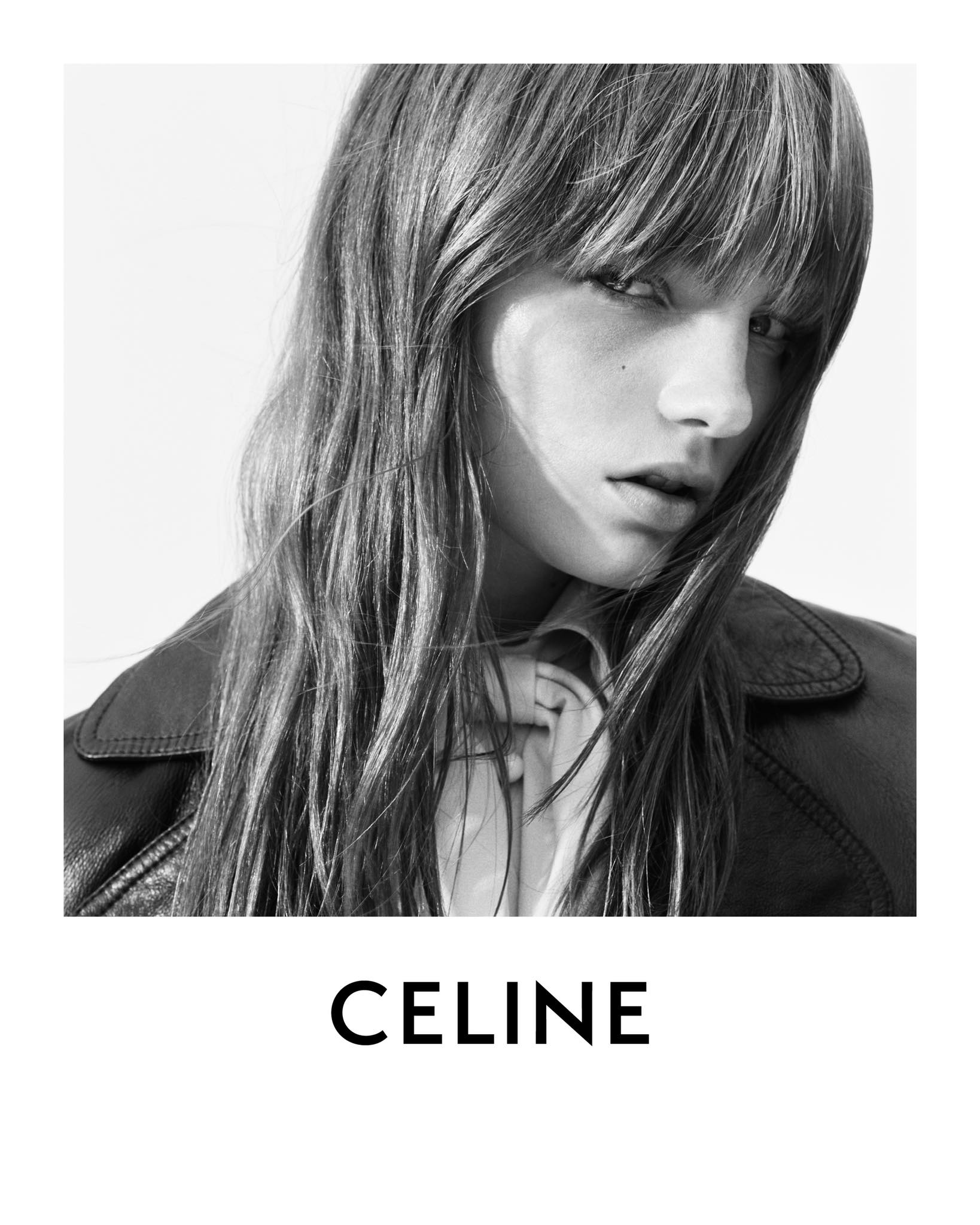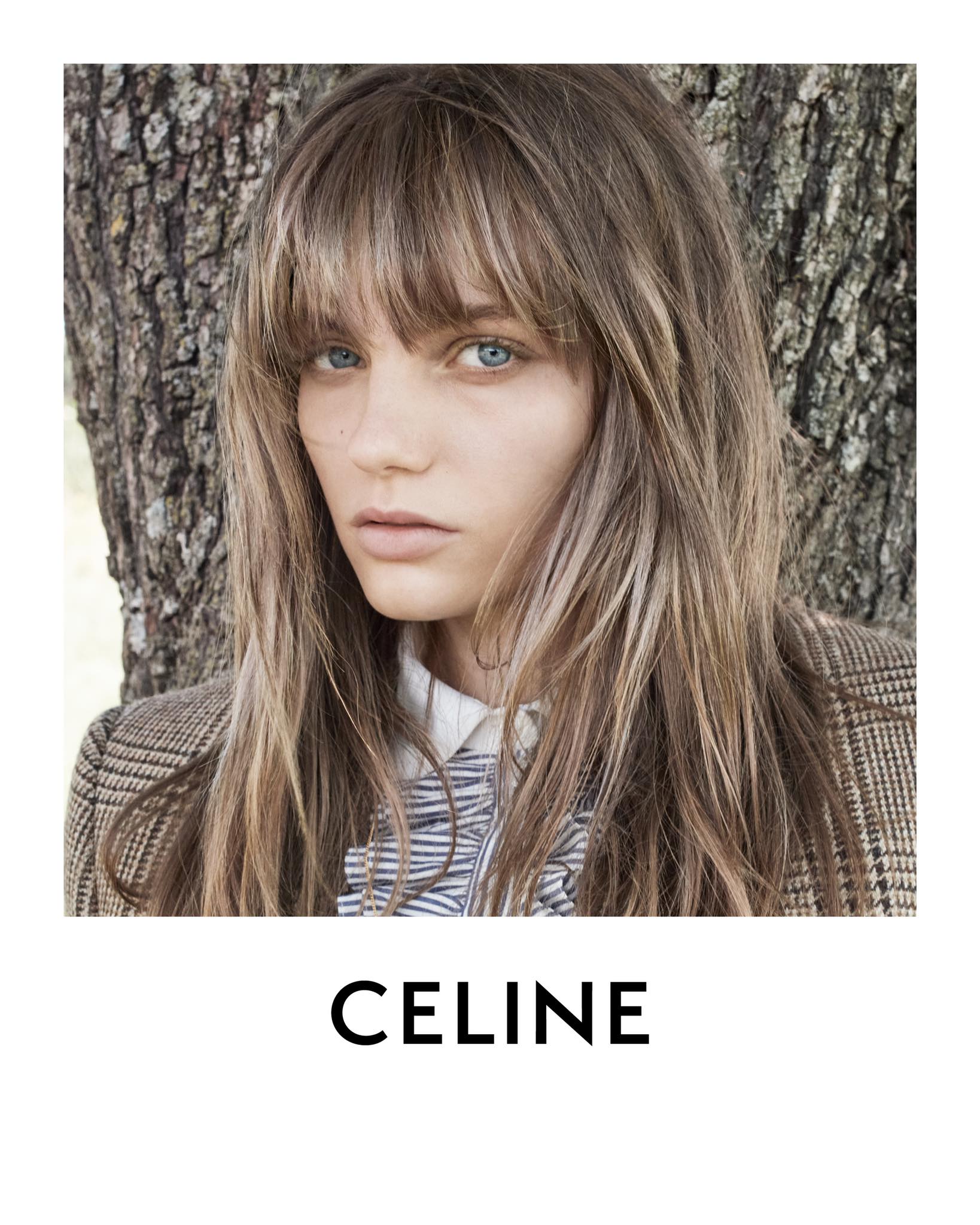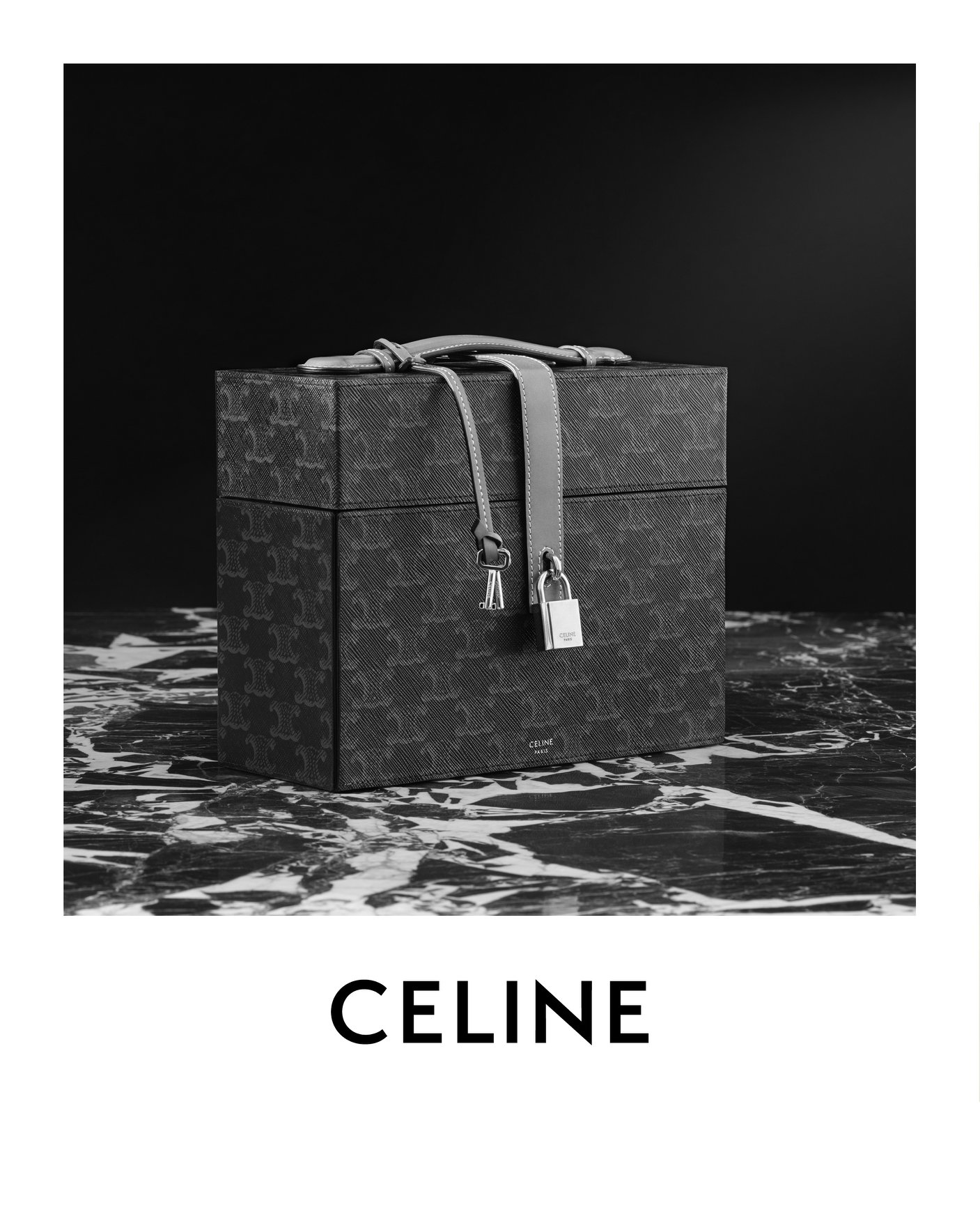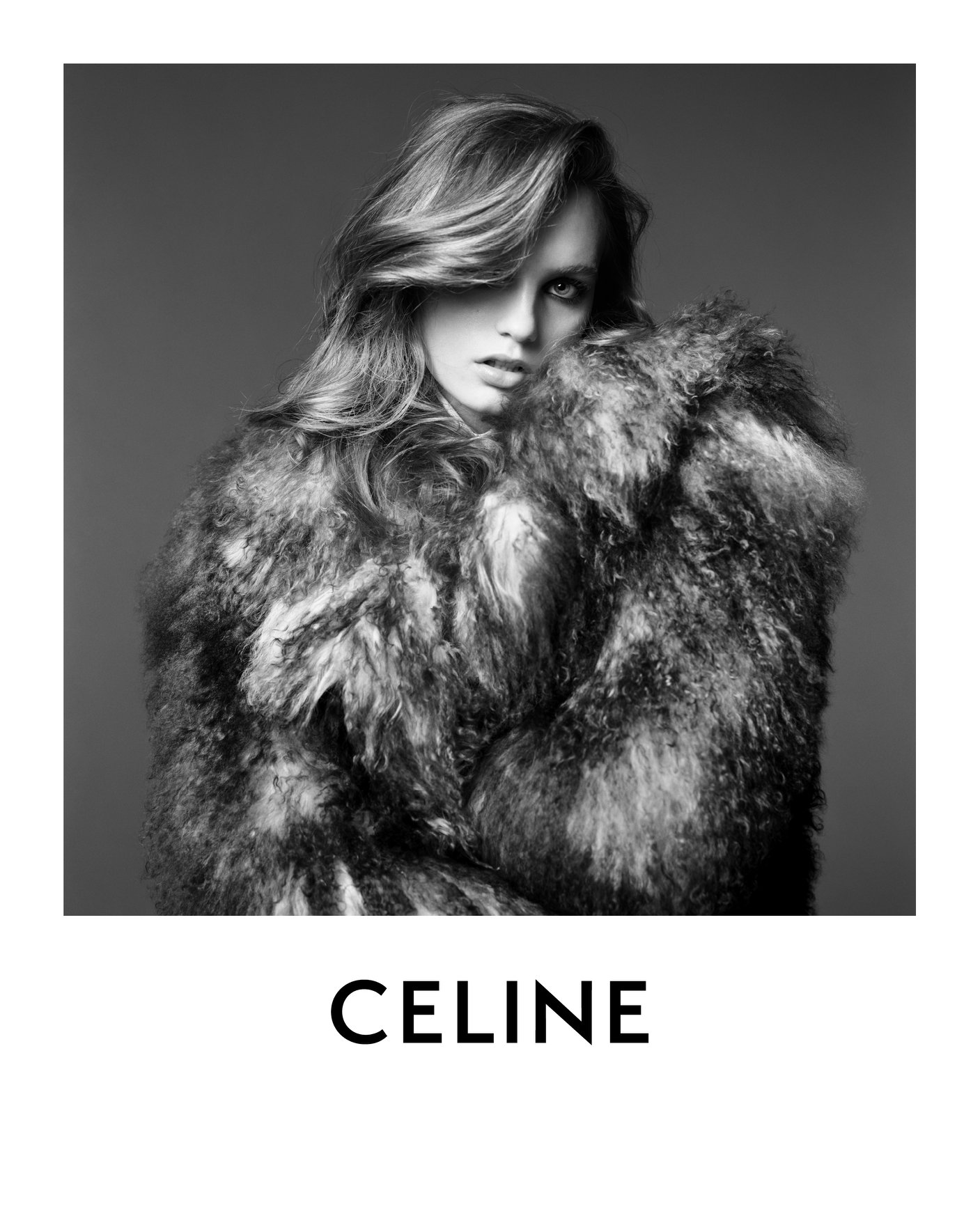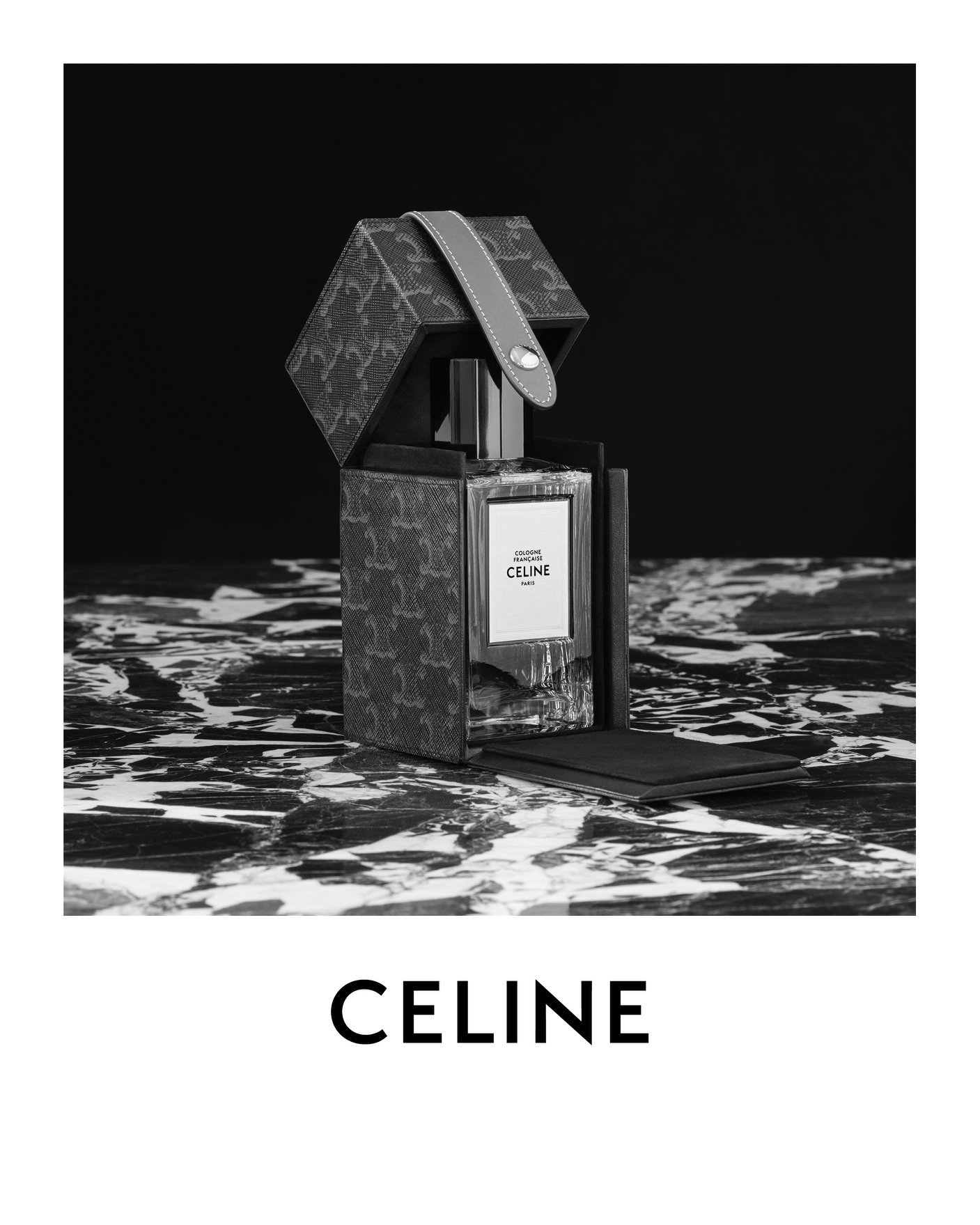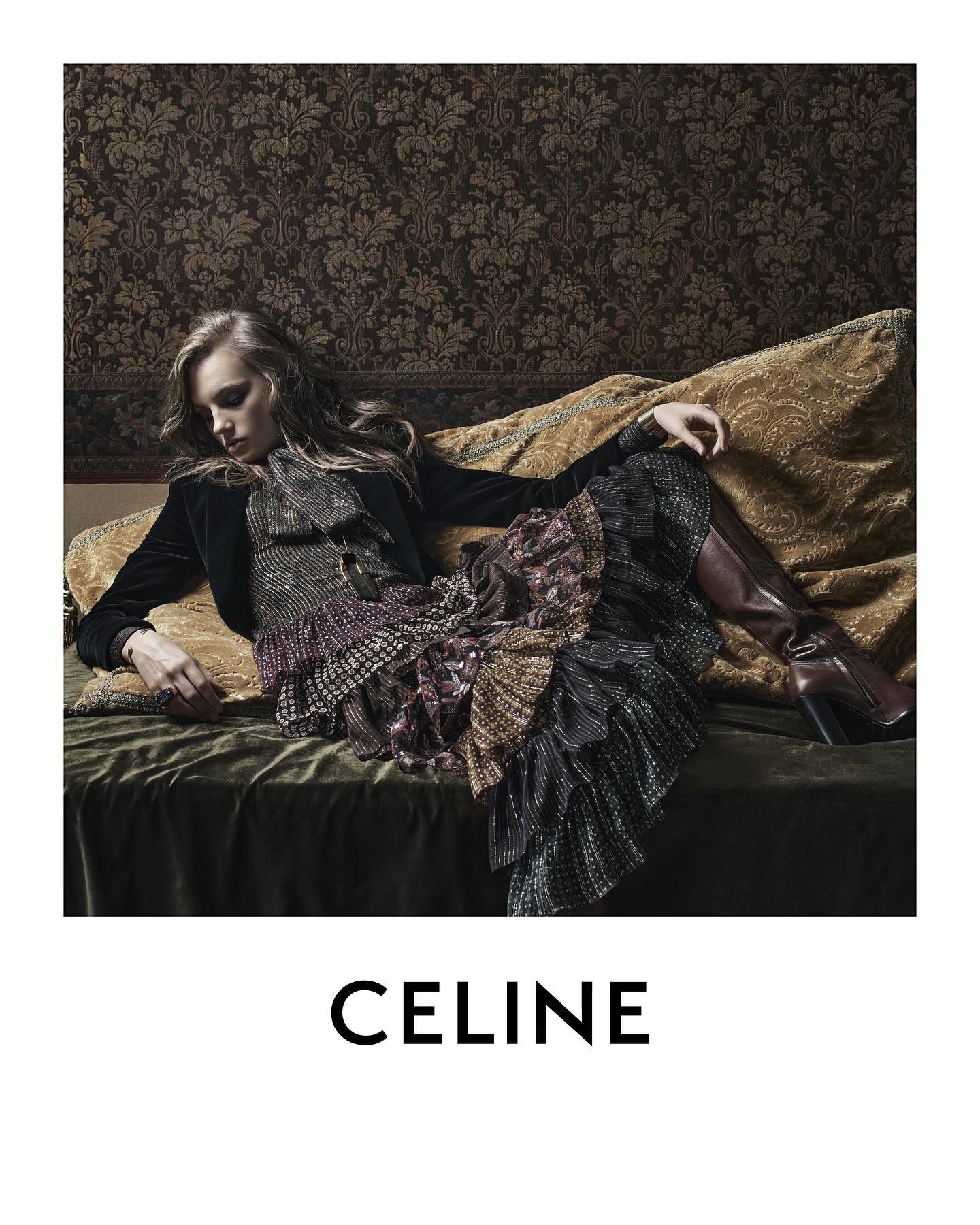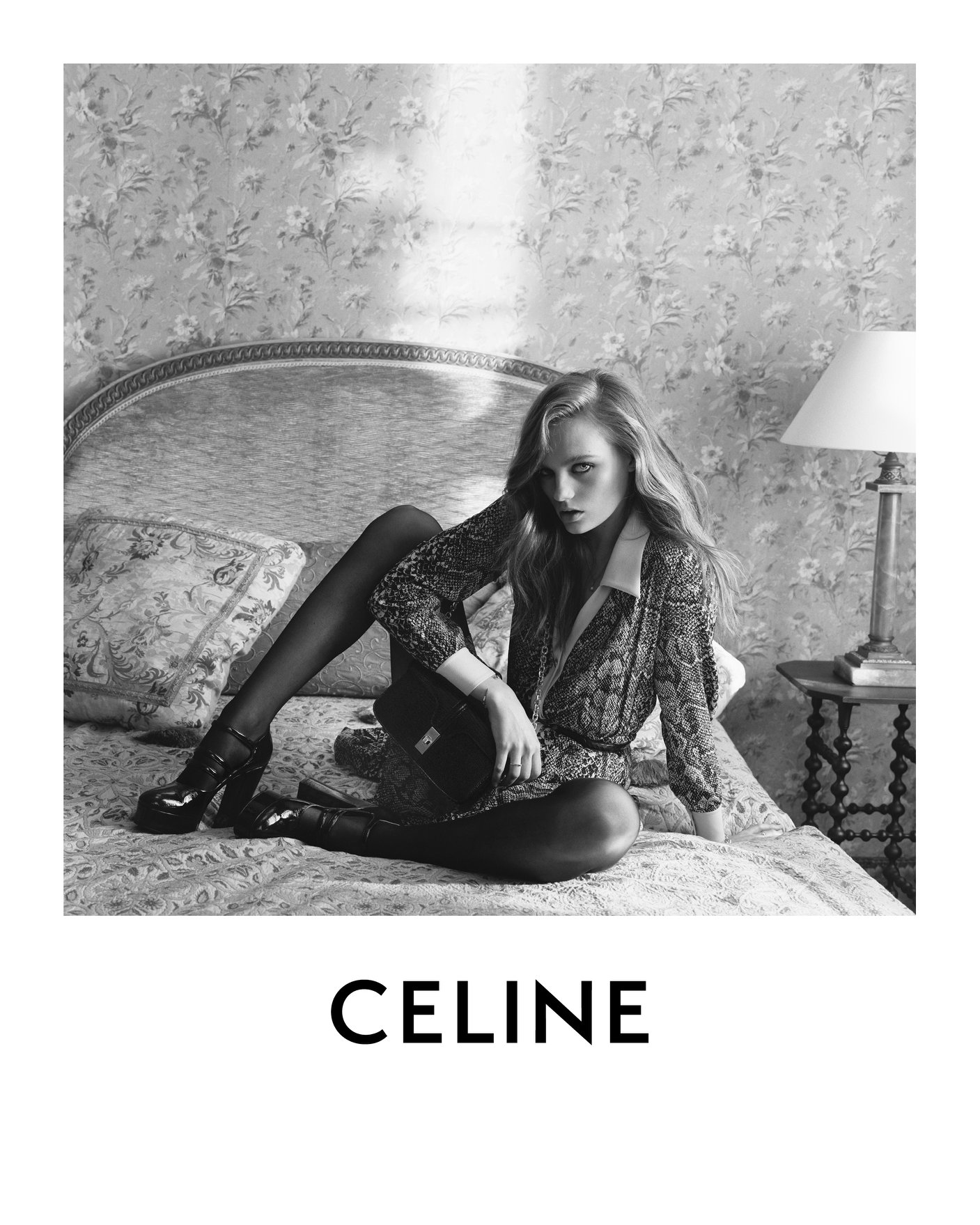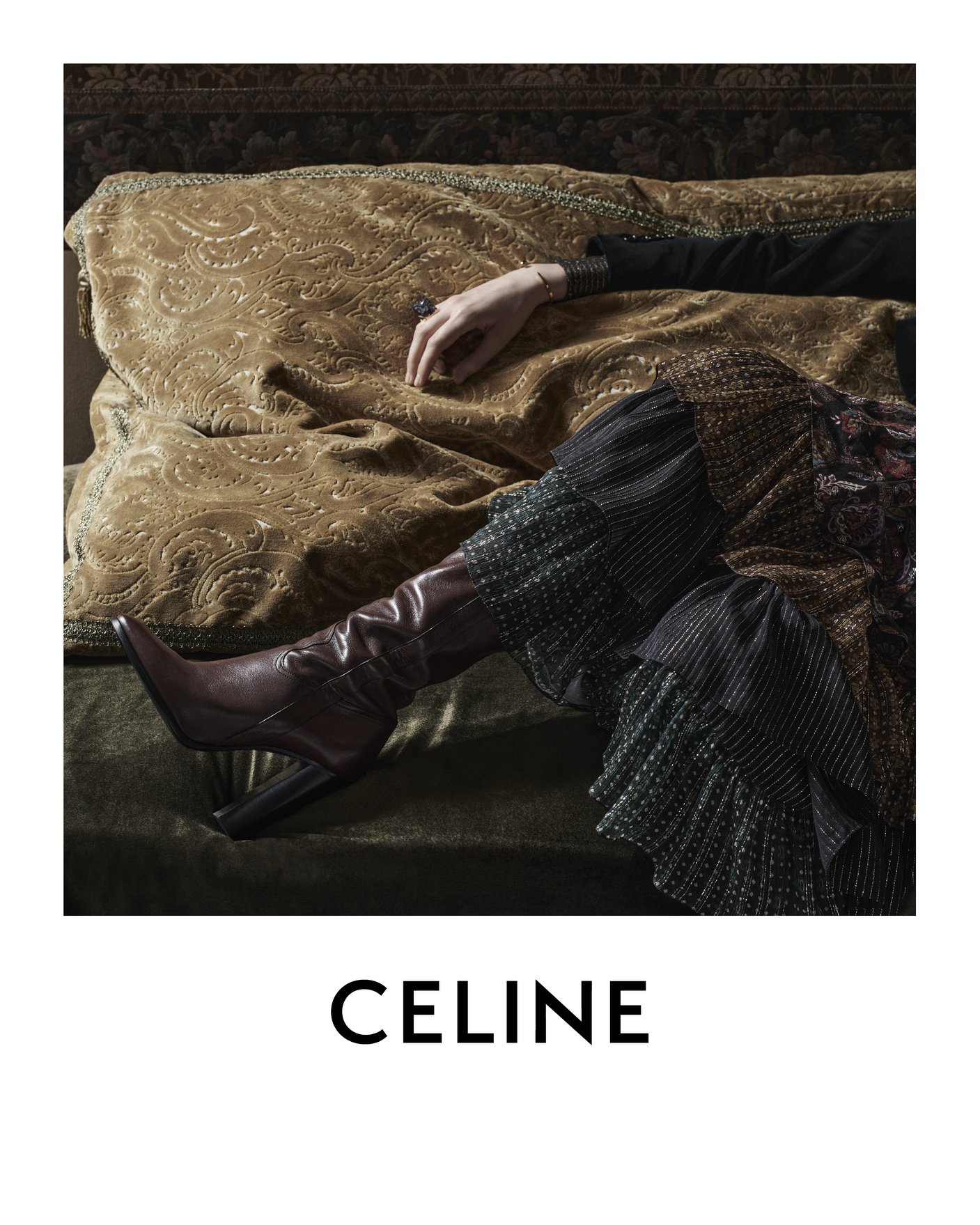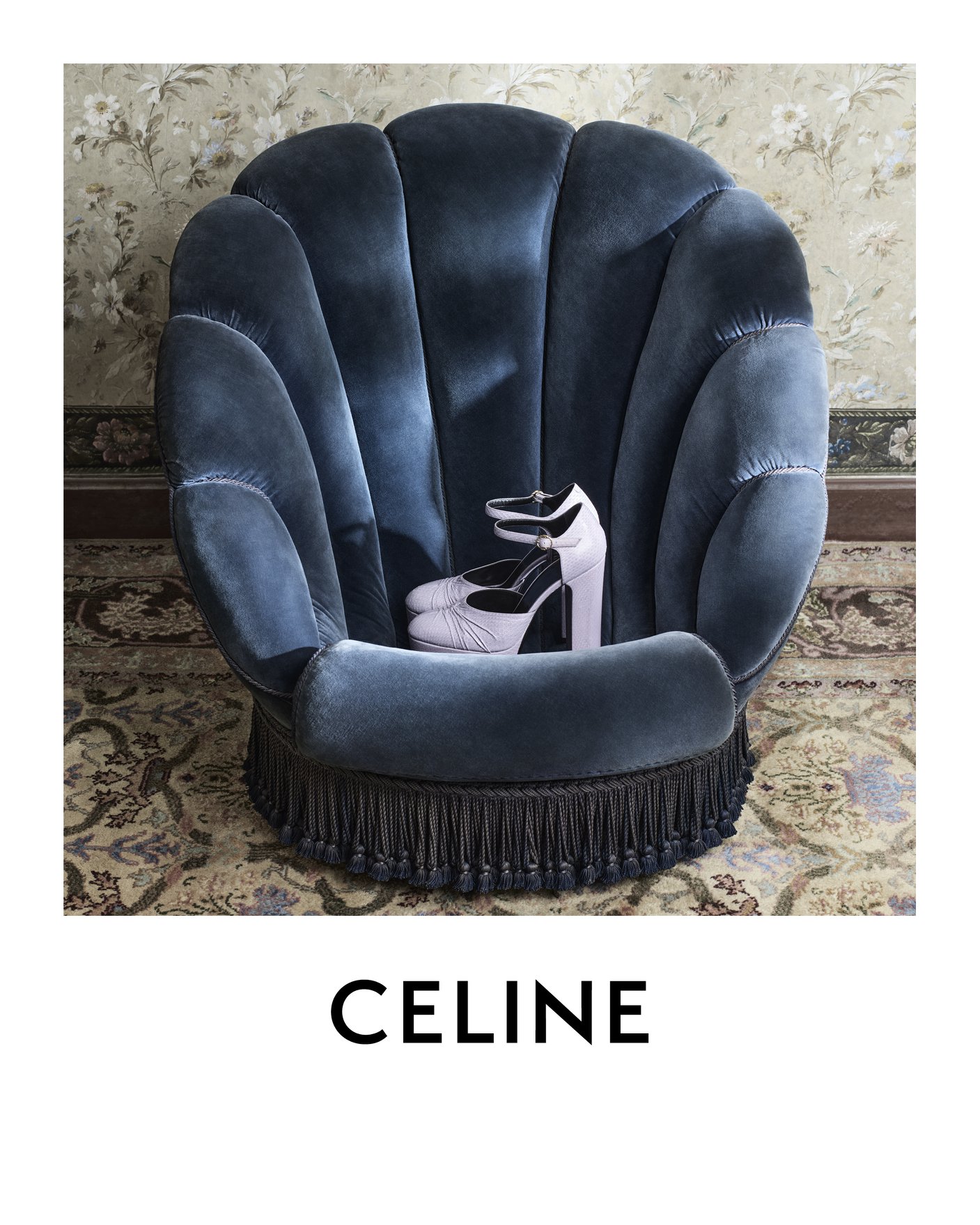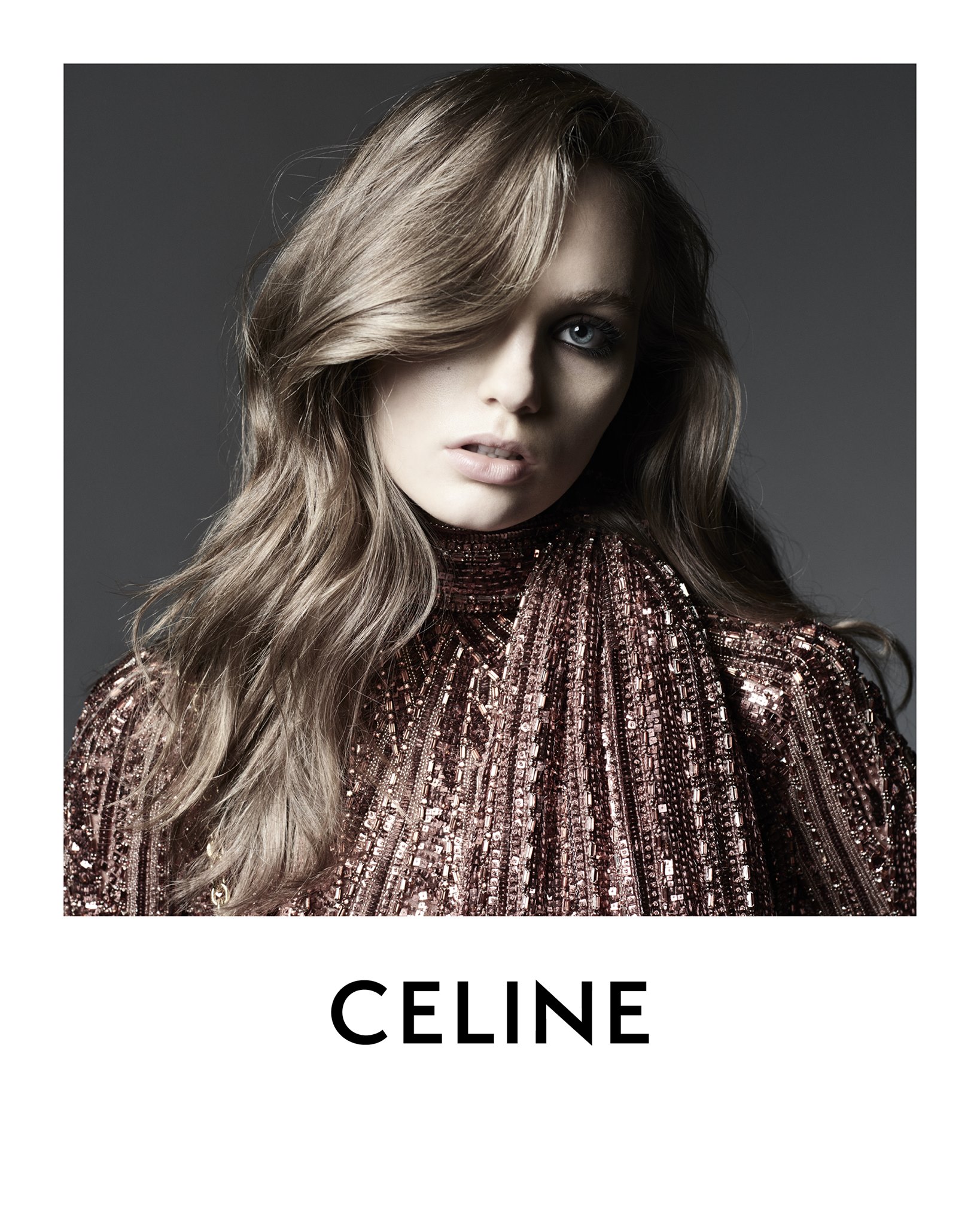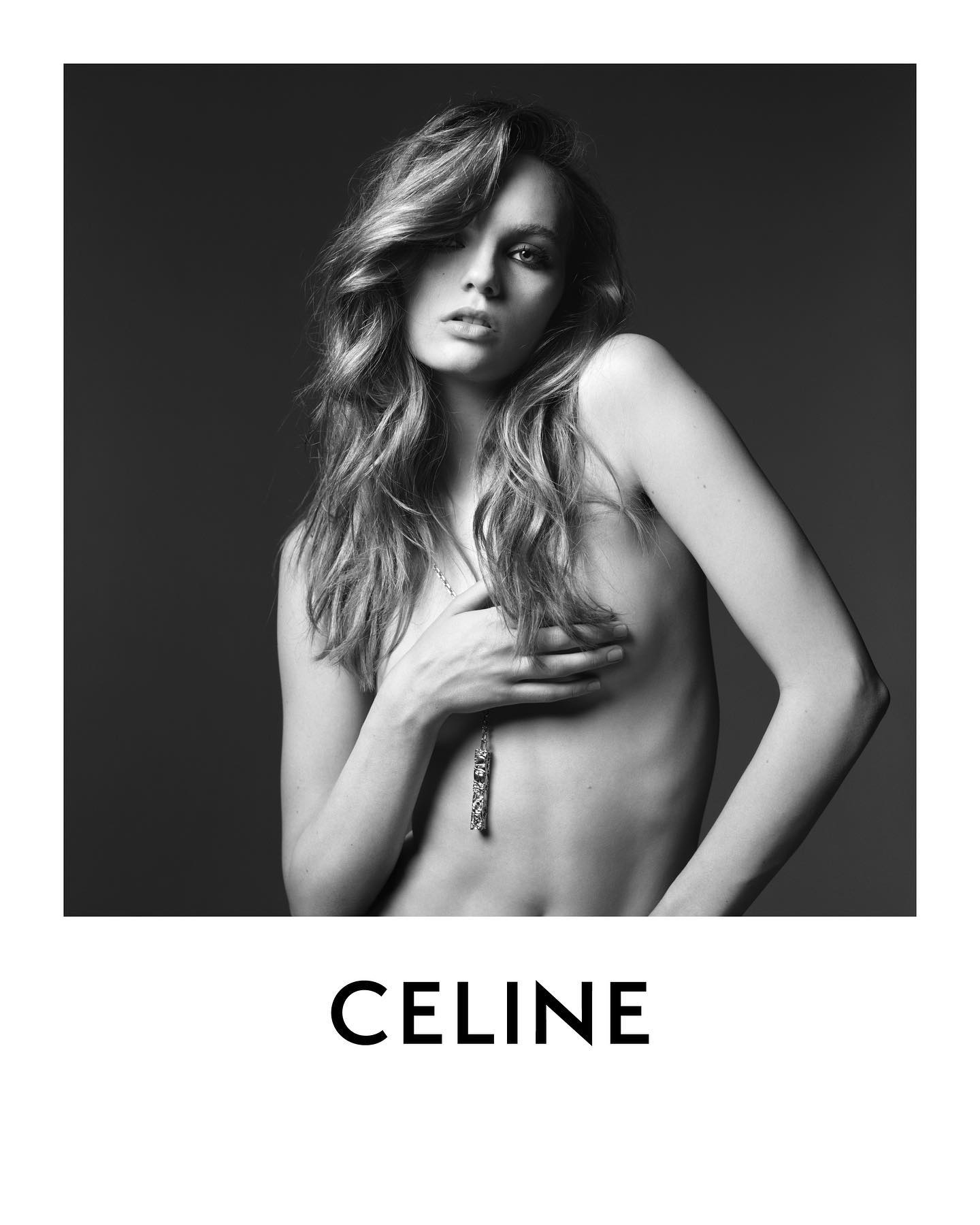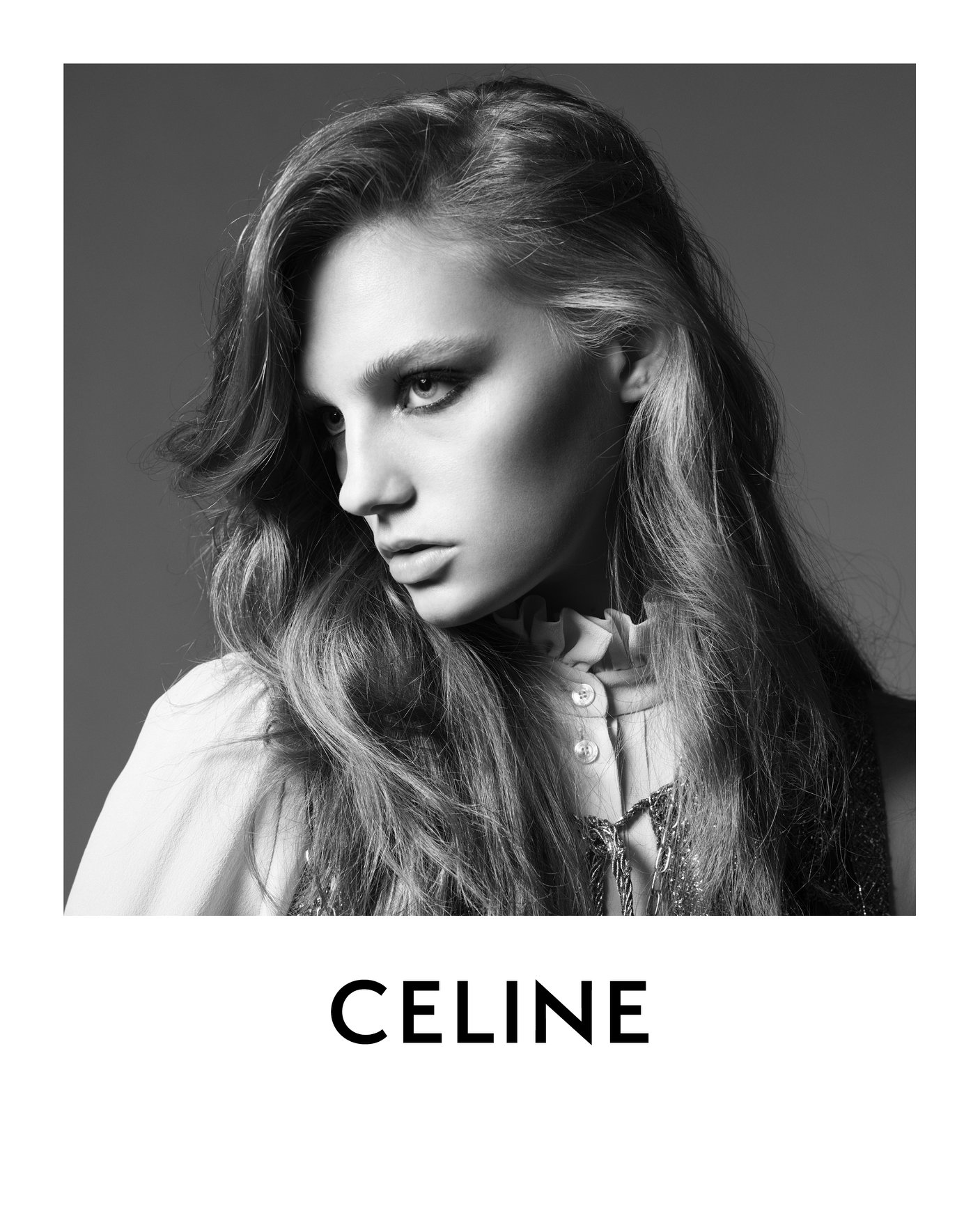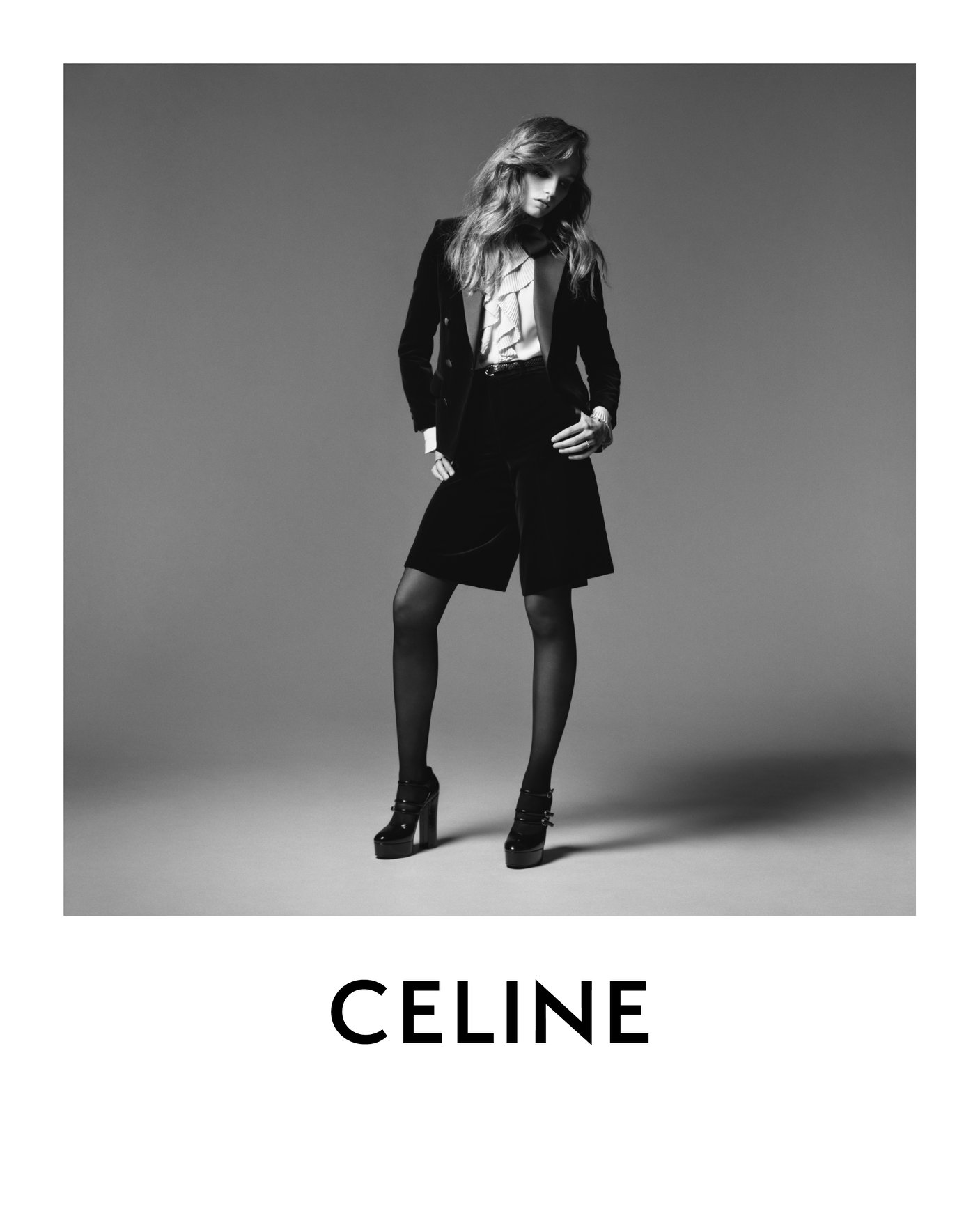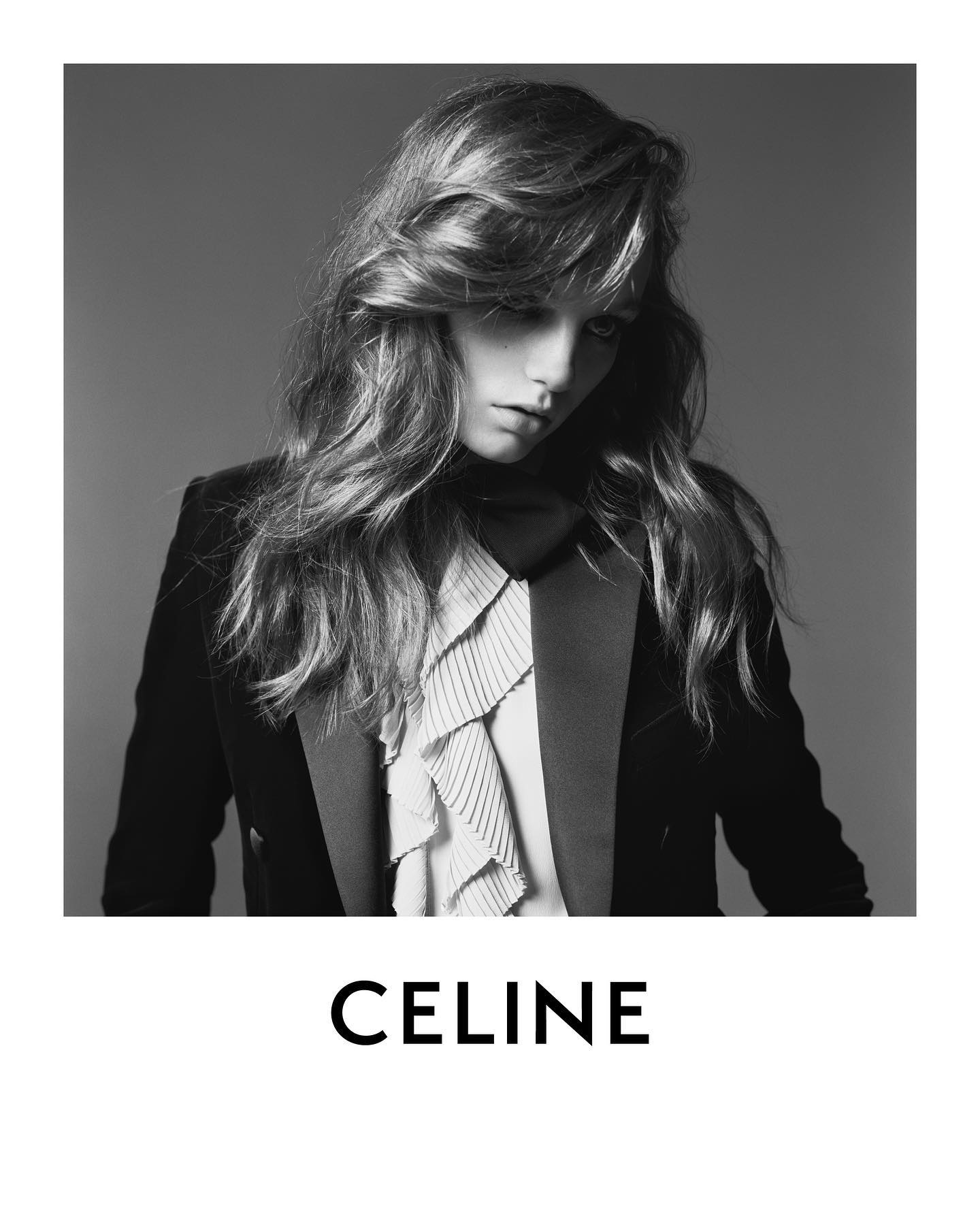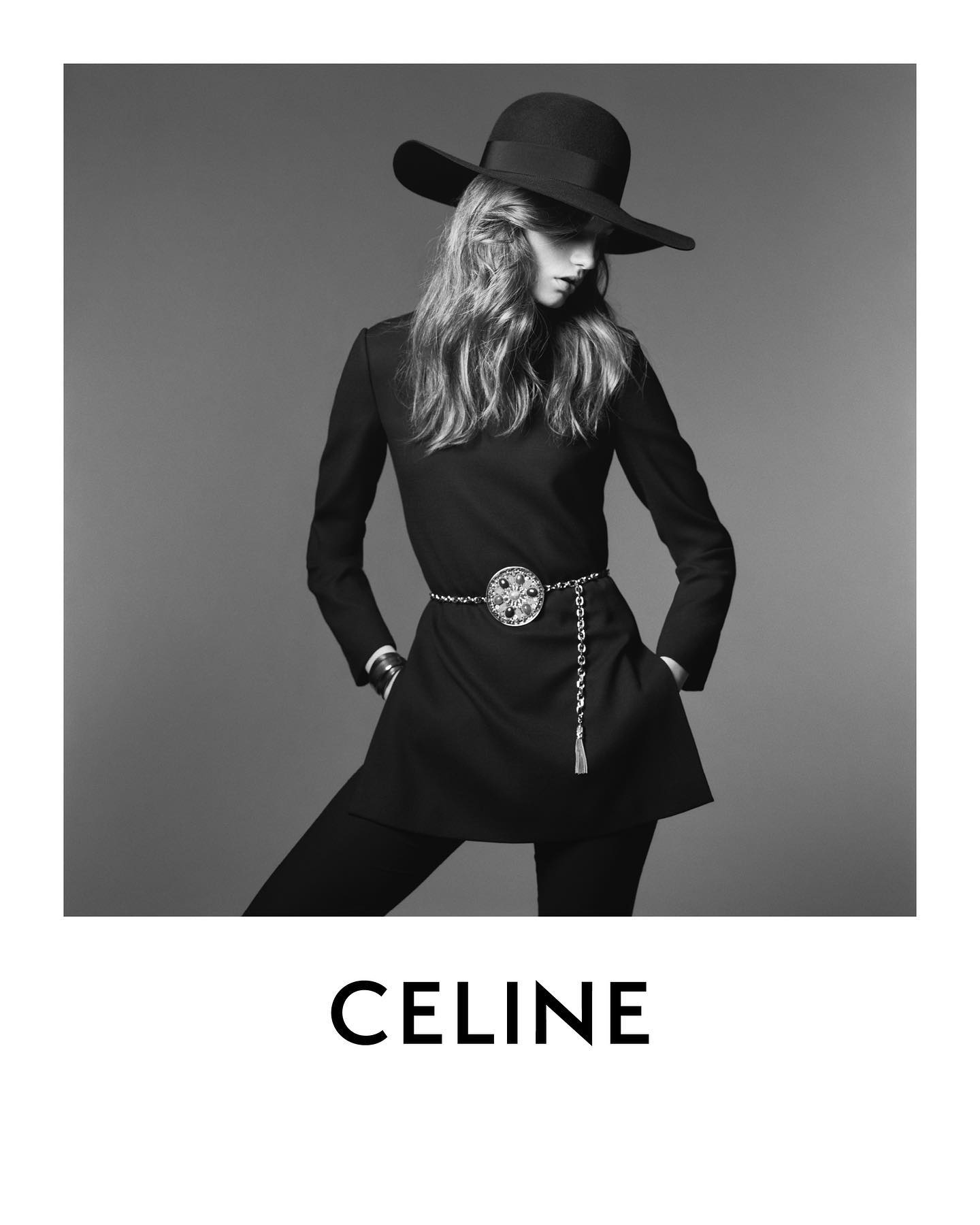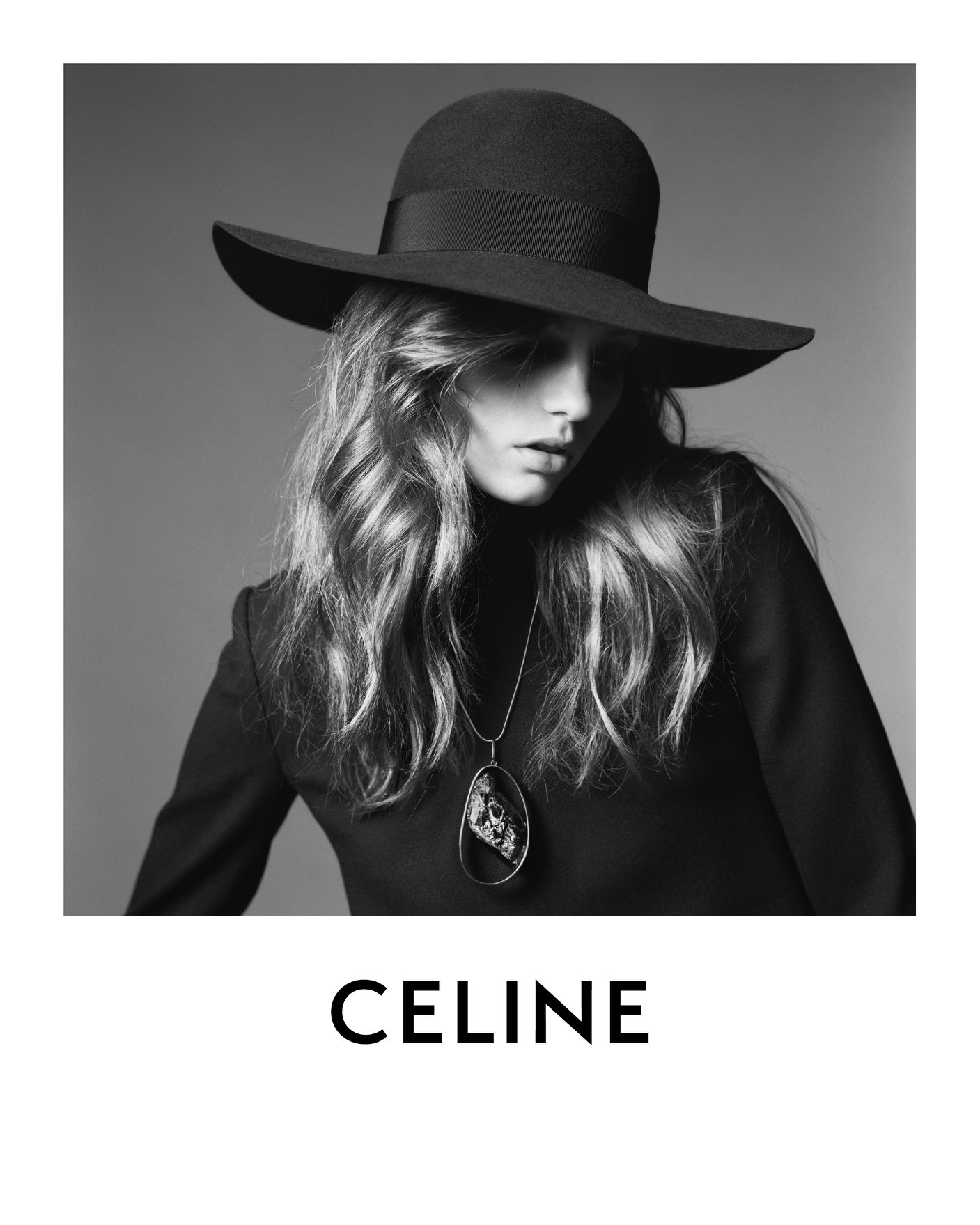The recent history of ad campaigns and publicity from Celine presents a picture of a brand in conflict with itself. The work of creative director Hedi Slimane, who also serves as the brand’s only photographer, seems to embody a tension between the image he has created for Celine, and the social and cultural values of the brands’ larger parent company LVMH.
This story plays out against a backdrop of the increased scrutiny under which Slimane has found himself since the reignition of the Black Lives Matter movement in March. Slimane has been accused of whitewashing and intentional exclusivity, and, looking through his body of work, it is hard to say that these claims are unfounded. An important moment of progress seemed to arrive when he included beautiful photographs of young black model Essoye Mombot in a campaign that appeared in July – but was this pure tokenism, a performative attempt at wokeness?
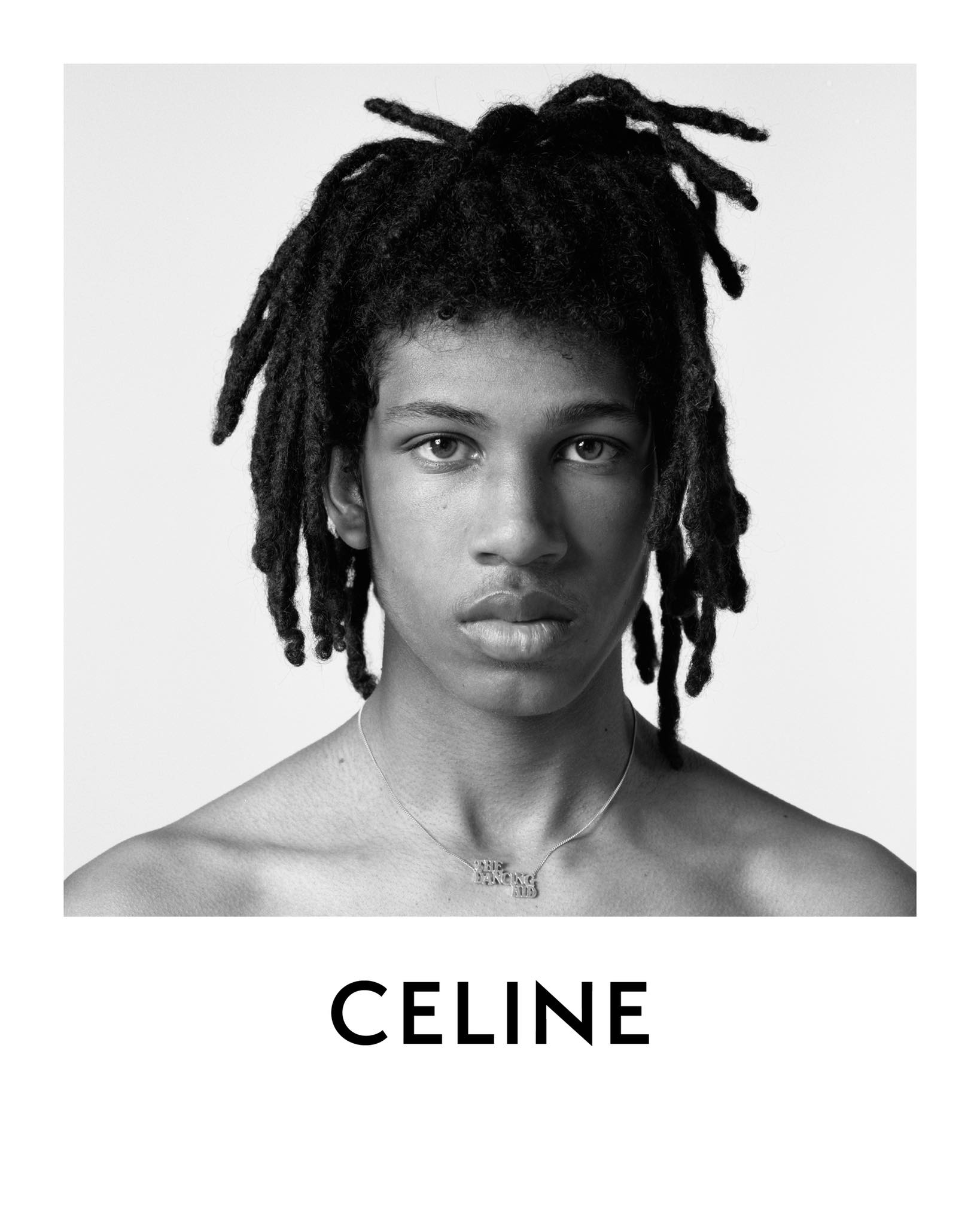
Only one black person has appeared on Celine’s Instagram account (the content of which seems to be almost entirely created by Slimane, as he photographs all of his own campaigns) since Essoye Mombot, in the form of a beautiful portrait of Colin Taylor. Colin appeared in Slimane’s “The Dancing Kid,” a virtual presentation of his Celine Homme collection that seemed to be heavily inspired by Tik-Tok stoner e-boys, complete with music by Tik-Tok based meme remix musician Tiagz (real name Tiago Garcia-Arenas). Tiagz, who is Latino, soon appeared on Celine’s Instagram himself in a lovely series of three shirtless portraits – another refreshing break from all the whiteness.
Slimane soon got up to his old tricks however, capturing model Fran Summers (who was already the face of Celine’s Spring campaign) in his Fall 2020 women’s collection. It is the same imagery we have seen from Slimane a thousand times before: a beautiful, thin, young white person looking moody in black-and-white studio portraiture or reclining in a meadow, dressed in posh and predictable Celine – or, sometimes, completely undressed. Summers – like all of the Celine men and women – certainly is beautiful, and Slimane’s imagery of her is gorgeous. In a sense, he is doing strong work to represent the brand: his imagery is intentional and consistent, and clearly highlights the narrative that the brand is trying to sell to its consumers.
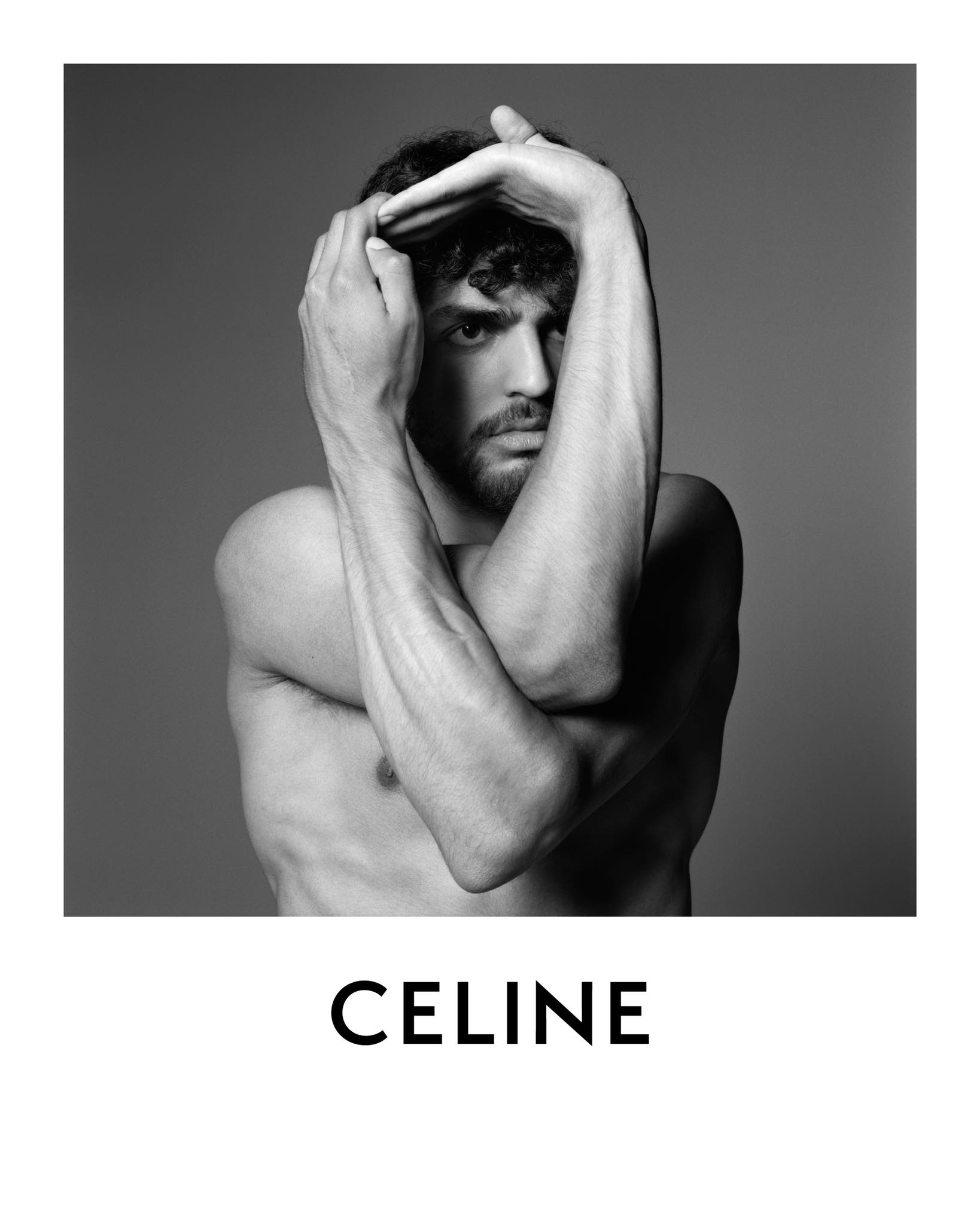
But is it right or responsible to sell only this one narrative, this one image? Even from a purely financial perspective, the white, euro-centric approach seems dubious. Japan and continental Asia made up 42% of LVMH’s – the parent company of Celine – annual sales revenue in fashion and leather goods for 2019, while Europe made up 31%, and the United States 18%.
These two latter continents are, of course, incredibly diverse. Suffice it to say, many of the people who buy the company’s products are not represented by the people Slimane uses to sell them. An interesting anecdote expressing this fact is that after Lisa from the K-Pop group Blackpink – whose enormous and global fanbase is notoriously rabid – appeared in a brief ad on Celine’s Instagram in June, Blackpink fans blew up the comments of every single post after, clamoring for her return. The noise seems to have been heard, as Celine recently announced their continued collaboration with Lisa by reposting the same shoot with an announcement on Instagram that she would represent the house as Global Ambassador. It is impossible to know whether this was Slimane’s decision or the influence of higher levels of management trying to steer the brand in the right direction.
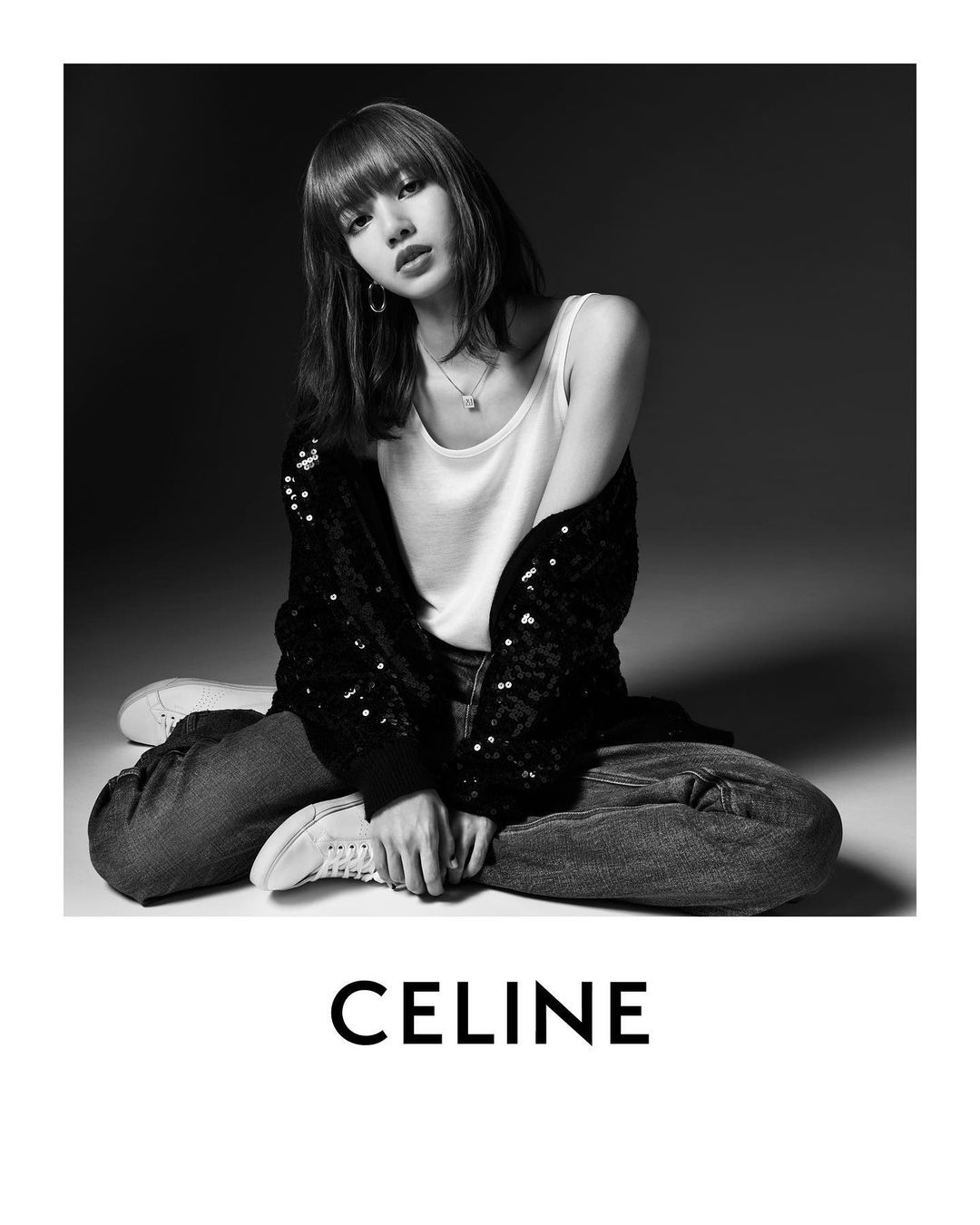
Celine’s image also has an impact from a more important, more human perspective.
On the one hand, Slimane claims to be interested in artistry and youth culture. On the other, his own work shows him to be largely interested in a single aesthetic, one which feels based on exclusivity and bygone, euro-centric beauty standards. The fact is that these two attitudes are contradictory. Art is becoming more global, more free, less rigid; beauty is becoming more accessible and more inclusive, and young people know this. It seems that LVMH is also aware of this, embracing this social and aesthetic progress and creating an “Inclusion Index” in March 2018 to recognize Diversity and Inclusion initiatives throughout the Group. Thus, they need to recognize that Slimane’s current presence at Celine may present a conflict of interest if the brand does not continue to diversify.
What is the relationship between the image of a brand and its single creative leader? How responsible should a fashion brand be for the way its image reflects its public?
When fashion is such a complex and democratic social phenomenon, can a fashion brand separate the aesthetic from the social? Not only are these pressing questions for Celine and LVMH, but they are questions that every company, creative, and consumer has to reckon with.
Celine Creative Director | Hedi Slimane
Photographer | Hedi Slimane
Styling | Hedi Slimane
